#this post is specifically inspired by 'move' but is relevant for all
Text
➠ Sukuna, the ‘shunned’ child and the demonisation and worship of ‘unwanted’ children in Japanese folklore:
[long read. trigger warning: referenced folktales and practices depict themes of infanticide, religious rituals and child exorcism, demonisation and worship of children, ableism, suicide, implied sa, and period-typical outdated social views. they are not a representation of my personal beliefs. please read with caution.]
New revelations of Sukuna’s past in Chapter 257 made me look deeper into some of the tales and customs from Japanese folklore about children deemed ‘abominable’ in the eyes of society that I had previously noted down and I decided to share as I think they could offer a better insight into Sukuna as a character and what might have inspired Akutami Gege’s depiction of him.
It would be better to start with a bit of the social background of Japanese folklore. I will use the Emishi (an ancient ethnic group of people who lived in parts of Honshū, especially in the Tōhoku region) as an example, the oral tales of whom later blended with Shintō and Buddhist religious concepts and heavily influenced Japanese folklore. It is believed that many of their tales were shaped by the region’s difficult history of natural disasters, famines, and geographic isolation. In the Tōhoku region, infanticide was sometimes used as a form of ‘birth control’ due to repeated famines. The bodies of ‘unwanted children’ were often disposed of in rivers or lakes.
Another important source of such folklore is the city of Tōno in Iwate prefecture, known particularly for Kappa, tales of which could offer a good basis for the beginning of my intended analysis.
Kappa, a green, amphibious, child-like creature with a yellow beak for a mouth and a turtle shell on its back is one of the most popular Yōkai from Japanese folklore. Some researchers say that the darker aspects of Kappa tales in Tōhoku may be an echo of the region’s tragic history of famines and the high rates of infant mortality caused by a harsh climate, natural disasters, and the tax system that was paid in rice. Similarly, many people in Tōno (which is part of the Tōhoku region) believe that tragic history is one of the origins of the stories of Kappa. The Kappa of Tōno specifically are said to be red in colour rather than green, which may allude to the Japanese word for infant - akachan, which derives from aka, the word for red. From this perspective, Kappa are creatures born out of social challenges and disasters. They may not seem all too relevant to Sukuna, but the need to mention them will come up in the later part.
Moving on, at the beginning I mentioned that ‘unwanted children’ were often disposed of in the rivers and lakes, which is also found in the Japanese creation myth. I discussed the variations of the myth in this post about Sukuna previously (you do not need to read it for the moment, but please note that it has many variations), but somehow I did not mention their first ‘inadequate’ child. According to the myth, before they had Kagutsuchi, Izanagi and Izanami had a child as a result of their first attempt at a union, but the child, known as Hiruko (‘Leech Child’), was born deformed. The mistake was attributed to a ritual error on the part of Izanami, who, as a woman, should never have spoken first (i.e. initiated the union). Considering the child inadequate for a diety, they set him adrift in a boat in hopes he would die at the sea. This myth reflects how women and children who were born ‘different’ or seen unable to serve their ‘purpose’ were treated.
Continuing from the myth, Chapter 257 made me think of the tale of Katako, in which the protagonist is born half-human and half-oni. What is Sukuna’s true nature we cannot know for certain. We know he was a human once, but we do not know enough of his past to assume if there was more to him (how and why he as a human might have come to be called the King of Curses will be explained in the later part), but the tale still has the potential to give us insight into Sukuna and his mother’s relationship. The tale has various versions with different endings, but it generally could be summarised as follows:
[A long time ago, a man encountered a man-eating ogre (from here on referred to as oni) while working in the field. He told the oni how much he loved mochi (rice cake), jokingly adding that he could even trade his wife for it. Taking his casual banter seriously, the oni treated him to mochi. The man ate his favourite food to his fill and happily went home only to find that the oni had taken his wife in exchange for the treat. The man searched everywhere and finally found his wife on the island where the oni lived. The man and his wife managed to come back home with Katako (meaning ‘Half-Child’), a child born of his wife and the oni on the island. However, Katako was always ostracised by his human peers (in another version, it is said that he had an insatiable appetite for eating humans). At ten years old, tired of being ridiculed, he asked his mother ‘to cut the oni part of him into pieces’ when he died, and then committed suicide.]
In the tale, Katako’s relationship with his mother seems to be of trust. He is cast out of society by humans and despite his mother being one as well, he does not harbour hate for her, he trusts her enough to leave his final wish upon her. We do not know much about Sukuna’s relationship with his mother, but the manner he referred to her in the last chapter makes it seem that he also harbours no hostility toward her. This tale also shows how children deemed ‘different’ were treated.
In past ages, children, being considered closer to the gods and the Other World, also played the part of intermediary between humans and the gods in Japanese society. This task of mediation between two separate worlds fell to them because they were regarded as incomplete persons (until the age of seven it was considered uncertain whether they would live or return to the Other World: a belief related to the challenges indicated at the beginning). While considered sacred beings different in nature from adults, they were at the same time looked down upon and referred to as kodomo (where ~domo has a negative/belittling connotation), gaki (hungry ghost or demon; brat), or jari (lit. gravel).
Back in the day, people referred to the killing off of ‘unwanted children’ (mabiki or ‘culling’, a common old slang for infanticide) as ‘sending a child back’, and a dead child was given a special non-Buddhist funeral. The various rituals surrounding birth and the child’s upbringing were intended, through communication with the Other World, to transform the child into an earthly being. This aspect of the ritual made me think of Sukuna’s mask and how that part of his face resembles a burn scar (note: i am aware the nature of his ‘mask’ is still not clear and whether it is really one) in some of the official illustrations. It is known that rituals of purification included fire and water magic. Exorcism of demons, aversion of disasters, and other rituals for the removal of pollution were frequent. A katashiro (paper cut in the shape of a man) symbolising the disaster would be burned or floated down the river as well. Personally, I see the possibility of Sukuna’s scar (if it really happens to be one) being from one of such rituals.
Continuing, there is a term - Goryō used to refer to the spirits of those who had died violently (e.g. by murder or execution) and have become gods. It also included those who had died untimely deaths and therefore had been unable to fulfil their purpose in this world. Some notable gods such as Hachiman, Tenjin, and Tenno were once considered powerful Goryō. Great natural disasters and social unrest were attributed to them; rituals designed to appease them were performed, and a cult of such worship evolved. It was (usually) as a result of belief in Goryō that particular individuals came to be worshipped as gods. At times when public unrest threatened the social order, elements estranged or excluded from the ‘normal system/order’ were assigned the status of Goryō and worshipped as such. The cult was intended to purify and renew society. Manga has given us a similar glimpse of Sukuna’s past, where despite being feared (and despised), people were ready to serve him (and pray in his name) for their own well-being. I think Akutami intended to echo this very aspect of society through the scene.
I mentioned that children were considered closer to the gods and the Other World, but not all children were treated equally. One version of the origin of Kamadogami in the Tōhoku region is that he was an ‘ugly child’ from the Dragon Palace who had been killed and was thereafter worshipped at household hearths. Zashikiwarashi, who often inhabits old houses and is said to bring good fortune while he remains, is another household god in the shape of a child or, in another version, the spirit of an unwanted child who, having been killed off, became the guardian god of houses. I mentioned Hiruko at the beginning as well, who was set afloat on the boat in the sea. Despite that, he is in some Shintō shrines identified with Ebisu, the patron of fishermen and tradesmen. Their worship was for the purposes indicated in the previous abstract, to avoid their wrath. Sukuna has not been ‘killed off’ like these children were, but such worship shows us the general psyche of the public.
I indicated that socially inferior and rebellious beings were treated similarly in the previous part. The character Dō of Dōji (童子, meaning child) once meant ‘slave’, tattooed on the forehead, and was closely linked to notions of personal status. It signified one who was not a complete person and also one who had not yet been initiated, in other words, one who did not belong to the order of this world, one who was in this world but not of it. They were despised, feared, and avoided by ordinary people for their strange appearance and magical powers. In some cases they even formed separate ‘child’ villages (dōji mura), calling themselves ‘descendants of oni (demons)’. Since they played the role of demons during the rituals, they were shunned by the nobility as if they were real demons. Could this somehow connect to Sukuna’s title? I do believe there is a possibility this could have inspired his being as the King of Curses.
The ‘ugly child’ who appears in the story of the origin of Kamadogami has parallels in Yokenai, Untoku, Hyotoku, and Hanatarekozo, children who brought good fortune and prosperity to the house in return for offerings to the Watery World of kadomatsu (pine-branch gate decorations for the New Year) and firewood. But despite that, their ‘ugliness’ and names were used as an indication that these children did not belong to this world. It is important to note that socially inferior and rebellious beings were treated in the same manner (here is where the point connects to Sukuna, continued from the next part in depth). Such children were often associated with the colour red. For example, Zashikiwarashi is described as red-haired and red-faced. Kintaro, Shutendoji, and other children born in unusual circumstances (but may not have been considered an ‘ugly child’) and brought up in the mountain wilderness are also said to have had red bodies and were endowed with superhuman strength. I also mentioned that Kappa from Tōno were depicted as red. We see Sukuna often associated with the colour red, particularly, his eyes are red. I believe the above-mentioned could be the reason for that.
Personally, what we know of Sukuna and his past seems to echo these folktales and practices as the foundation of his character. He was a ‘Demon’ for being an ‘abominable’ child, but he was worshipped for this same reason as well. Whether he was born that way after eating his twin in the womb or something happened to him later in life cannot be known yet, but it is clear his ‘abominable’ appearance could have warranted the same treatment from society. It could also explain Kenjaku’s ‘fascination’ with him as a being. We do not know what relationship they had or how exactly they came to know each other, but there is clearly a reason why a being such as Sukuna would ‘work’ with them. We do not know much about Kenjaku either, but it could be possible that they (Kenjaku) once were either (1) one of those ‘priests’ who performed exorcism to purify ‘demon’ children or (2) someone who offered such children refuge (perhaps and more likely, for their own personal gain). It would also relate to the variations of Ryomen Sukuna’s story that inspired Akutami Gege.
[Disclaimer: This post does not intend to demonise Shintoism or Buddhism, but to tell folklore and practices for analytical purposes. Additionally, English is not my native language and this is only a personal interpretation as just another reader that I am sharing in case someone finds it interesting or can use the information for better analysis.]
#oh. ha. guess who zoned out and ended up with this huge info dump.#if anyone actually reads this i will be shocked.#this is probably the last one on sukuna. (watch me change my mind when something new is revealed next chapterㅋㅎ)#jjk#sukuna#jujutsu kaisen#ryomen sukuna#jjk spoilers#jjk analysis#jjk meta#ryoumen sukuna#jjk sukuna#sukuna ryomen#(which one is the actually used tagㅋㅎ)
38 notes
·
View notes
Text
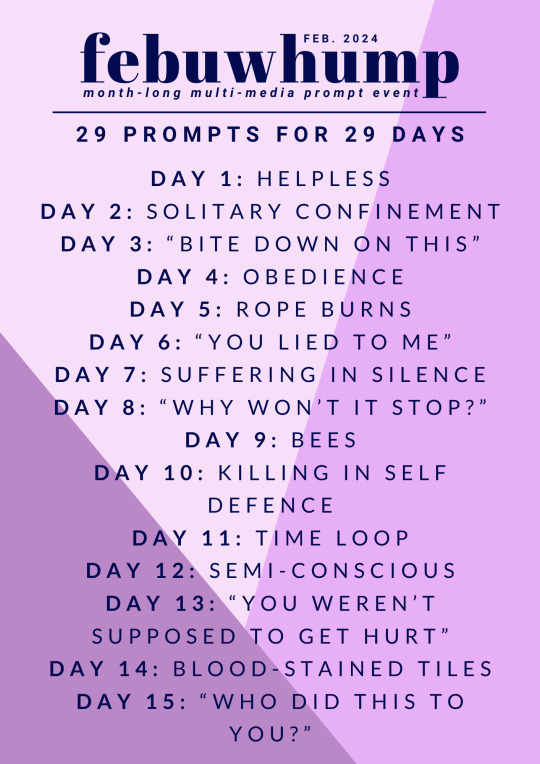
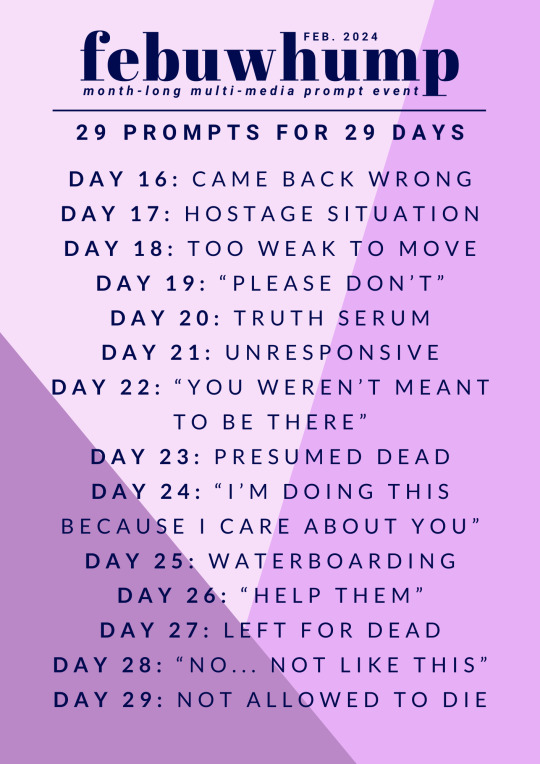
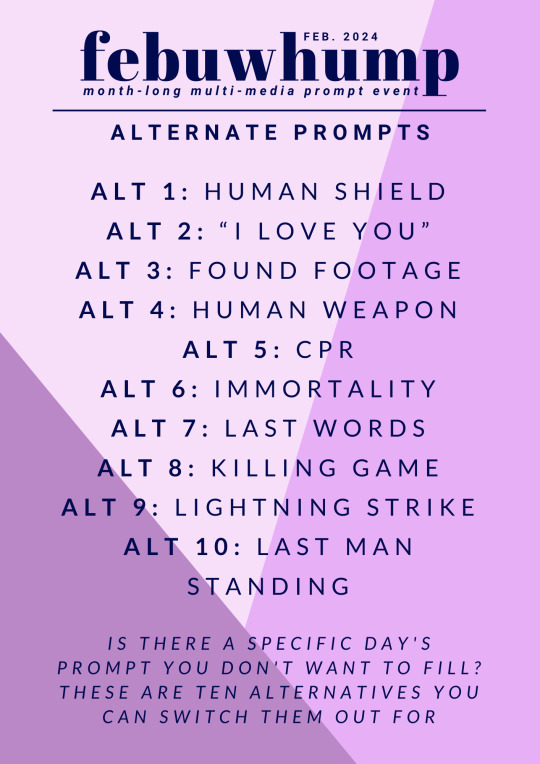

FEBUWHUMP 2024 PROMPT LIST
this year's prompts were chosen through a suggestion poll (in which we recevied 2,281 prompts) and a subsequent vote, where over 1,000 people voted for their favourites. the top 29 make up the core prompts, and a mixture of the next most popular - and this blog's personal favourites - have become the alternates
i’m so excited to see what you all create with these prompts, and hope they’re inspiring enough to trigger a whole month’s worth of creativity for you! if you have any questions, please check out the blog's faq before sending an ask, or check out the previously asked questions on the blog!
please note: this year, notifying the blog of completionist status will happen through a google form that will be released closer to the end of febuwhump.
full write-up of prompts and rules under the cut:
FEBUWHUMP 2024 PROMPTS:
DAY 1: helpless
DAY 2: solitary confinement
DAY 3: "bite down on this"
DAY 4: obedience
DAY 5: rope burns
DAY 6: "you lied to me"
DAY 7: suffering in silence
DAY 8: "why won't it stop?"
DAY 9: bees
DAY 10: killing in self defence
DAY 11: time loop
DAY 12: semi-conscious
DAY 13: "you weren't supposed to get hurt"
DAY 14: blood-stained tiles
DAY 15: "who did this to you?"
DAY 16: came back wrong
DAY 17: hostage situation
DAY 18: too weak to move
DAY 19: "please don't"
DAY 20: truth serum
DAY 21: unresponsive
DAY 22: "you weren't meant to be there"
DAY 23: presumed dead
DAY 24: "i'm doing this because i care about you"
DAY 25: waterboarding
DAY 26: "help them"
DAY 27: left for dead
DAY 28: "no... not like this"
DAY 29: not allowed to die
ALTERNATE PROMPTS:
is there a specific day’s prompt you don’t want to fill? here are ten alternatives you can switch them out for!
ALT 1: human shield
ALT 2: "i love you"
ALT 3: found footage
ALT 4: human weapon
ALT 5: cpr
ALT 6: immortality
ALT 7: last words
ALT 8: killing game
ALT 9: lightning strike
ALT 10: last man standing
RULES:
SOFT RULES:
prompts should be answered in the form of whump
creators can produce whatever kind of media they want
you don’t have to complete all the prompts! you can create however much you want to
you can use the prompts after the event ends and can complete them in tandem with any other event
you can post on any platform you want, however this blog will only be sharing those posted on tumblr
if you want to be featured on the hall of fame then you have until the 3rd of March to inform this blog that you completed all the days
if you have questions consult the faq before asking
HARD RULES: (specifically for being featured on the blog)
when uploading febuwhump content to tumblr, please use the tags:
febuwhump (i’ll also be checking febuwhump2024)
the relevant day’s tag e.g. febuwhumpday1, febuwhumpday2…
nsfw (if relevant)
and any trigger warnings that may be important!
you can also tag the blog, @febuwhump
i cannot guarantee your work will be archived on the blog because I have no idea how many participants there will be. a random selection of works tagged in accordance to the rules above will be reblogged every day of february.
4K notes
·
View notes
Text
Marriage of State AU Character Designs: The Mad King of Mezalea
Joel actually has three major looks through the course of the AU; Prince of Mezalea, Trophy Husband, and King Joel, with the subcategories of "armor" for each.
They all have the same base design of "human", differing by (apparent) age and general sense of style.
Some Joel Skins to start us off and provide the base we're working off of, and also the Mezalean banner because color pallet



And also, because it is actually relevant, (bear with me here) some samples of Mezalean architecture.


The Matral Palace and the Villager area.
Based off of Joel's final skin, the vibe is kind of "Victorian military dress uniform" however there is something very, very important to take into consideration from a worldbuilding perspective.
The Mesa is a warm weather biome. Its a colorful desert. Which means high temperatures during the day and cold at night. So tight-fitting, thick fabrics in a Victorian style would be incredibly impractical.
So we turn to the second possible source for fashion inspiration: The architecture, which gives mostly Byzantine vibes.
So what would Byzantine clothing look like, especially for nobility?
First off, taking into account that the Byzantine Empire lasted for approximately a thousand years and, naturally, underwent some dramatic changes in clothing style during that time, we'll pick a specific vibe out of the options. I settled on a bit of a mix between Early Byzantine (think the Theodora Mosaic shown below) and Middle Byzantine (see the mosaic of Emperor Constantine IX below)
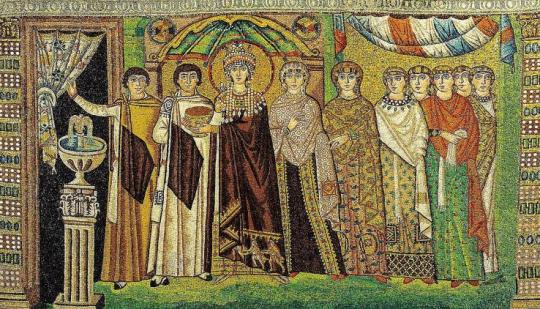

And here are just some screenshots from my pintrest board for Mezalea and Mezalean!Joel, because if I put all these on here separately I'll hit the image limit too soon.
(General disclaimer: yes, Pintrest has an art theft problem, yes Pintrest is much harder to effectively use now due to the pervasiveness of ads on everything, no I don't use it for like, formal things. It remains one of the best ways to collect visual references and figuring out The Vibes)


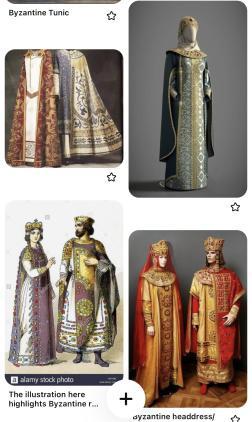

(Yes, we get to go full Material Gworl vibes for the Mezalean King, as is only right and proper.)
General characteristics I'm adopting here for Mezalean clothing:
Brocade (and bejeweled) kaftan/kaftan-esque outer layer. This is a formal wear thing, and is absolutely a "showing off the wealth" power move.
Lots of Big Chunky Colorful Jewelry
I don't know what it's actual name is, but that general style of having jeweled tassel-like things hanging from the front sides of the crown/headdress.
Light-weight and loose fitting under-layers.
And of course, bright colors.
Prince Joel: Before he became part of the main cast in an epic fantasy adventure spanning several hundreds of years and an entire continent (and the adjacent ocean) Joel was the youngest of three princes with two older brothers who were both married and had kids.
Which is to say, it did not look like he would ever be the king.
His role in the kingdom was very much that of an ambassador to and direct connection to their people. He spent a lot of time working on fishing boats and in the mines and quarries. While he did receive a standard royal education on things like diplomacy and combat, international interactions were not his focus at all, much more involved in the day to day operations of his own home. (And yes, that is a very vital aspect of the idea of "royalty" in general, supposedly, and that being a particular point of Joel's upbringing will make more sense when I get around to writing and posting the post about how royalty functions in the Empires. tldr; its related to the whole thing where Pixlriffs accidentally redefined "war")
Basically, Prince Joel = the first skin, the simple green one. He's wearing more lightweight, practical clothes that allow him to engage in physically demanding dirty work without costing a fortune every day. He still dresses up for formal events, but he doesn't even attend all of those and he is far from a daily sight in court.
Trophy Husband: For a couple hundred years, Joel didn't live in Mezalea. Instead, he was one half of the chronological first arranged marriage in the "au in which all the marriages are arranged" situation. And this one was the one that most resembles the set-up of a generic "period" bodice-ripper novel (though that is not how it played out ultimately, for the parties involved, despite the romance that does happen.)
Basically, this is his War Prize Era. In which Lizzie won a husband in combat and then didn't really know what to do with him.
During this time period, Joel mostly wore ocean styled clothing, though during formal occasions he would wear a notable amount of Mezalean accessories, that were part and parcel of the treaty with him. (I'm trying so hard not to derail this into just a breakdown of the events of the Joel & Lizzie arc of the au im trying so hard)
He did tend to mix Oceanic and Mezalean clothing, due in part to Oceanic clothing being primarily designed for underwater wear, while he lived above the surface, finding the balance of practicality and appearances demanded by the political nature of his existence at the time. (Also a personal comfort thing as Mezalean clothing tended to afford more skin coverage and also had shoes) Once he and Lizzie were more comfortable both in the world and with each other he had more opportunities for personalization and tended towards Mezalean styles in oceanic colors. He did develop a significant appreciation for the Oceanic idea of skin-tight under-layers for water travel.
King Joel: He did end up back in Mezalea as king, which is when we hit the style closest to the second skin, which mostly for this is really an indicator of color scheme. Formally, he is now wearing the full Kaftan and Jewelry look, day to day its more of "colorful, simple, and lightweight" because he still is very active in the day to day commerce of his empire. He does usually wear significantly more jewelry than he did as a prince, he grew a taste for it during his trophy husband era XD. The details of his day-to-day wear are also fancier. finer fabrics, more embroidery, brocade hems, etc.
Most of his earrings are gifts from Lizzie, some in Oceanic colors, some in Mezalean, but all with little chips of prismarine to remind him of her even when she can't be there.
Armor: Joel's armor preferences are simple netherite plate. He also does have a ceremonial trident, as a member of the Oceanic royal family. His is gold-plated.
-
art
Lizzie || Jimmy ||
AU Masterpost
#empires smp#empires s1#smallishbeans#the mad king of mezalea#rain rambles#marriage of state au#mos: worldbuilding#mos: joel
125 notes
·
View notes
Text
(Mostly) Lost, but Not Forgotten: Omar Khayyam (1923) / A Lover’s Oath (1925)

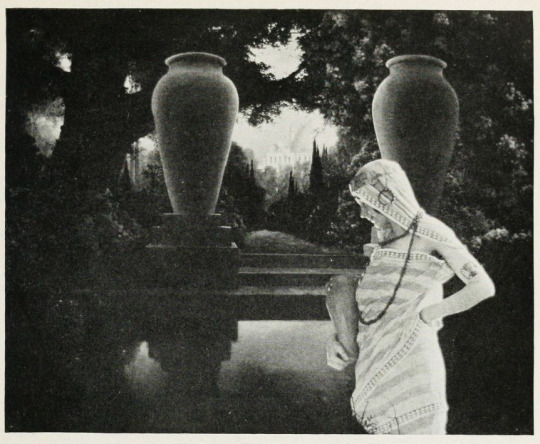


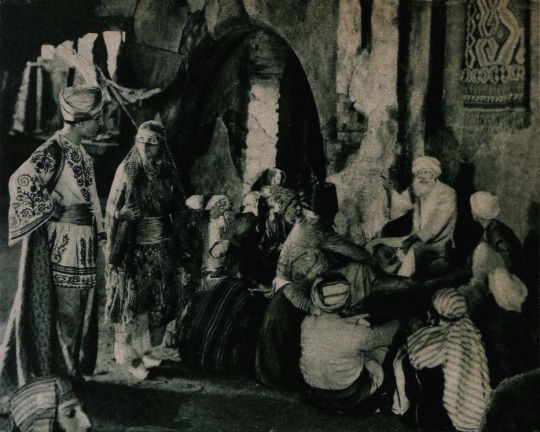
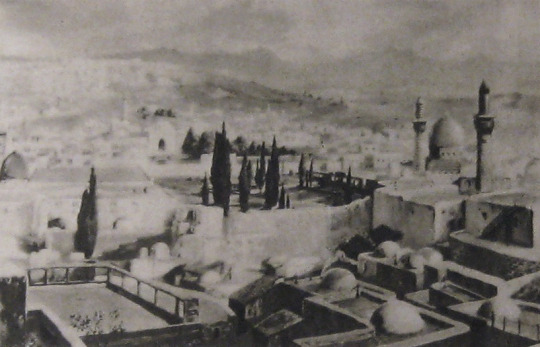

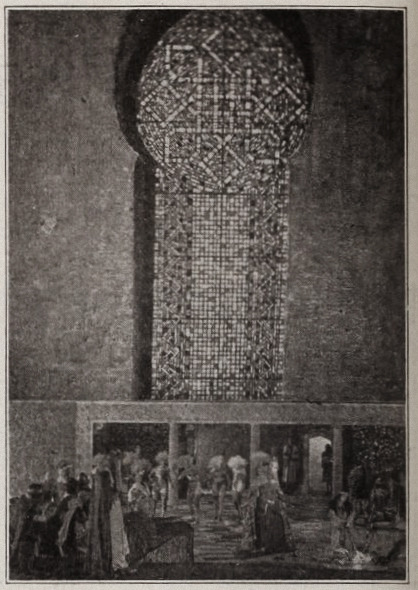
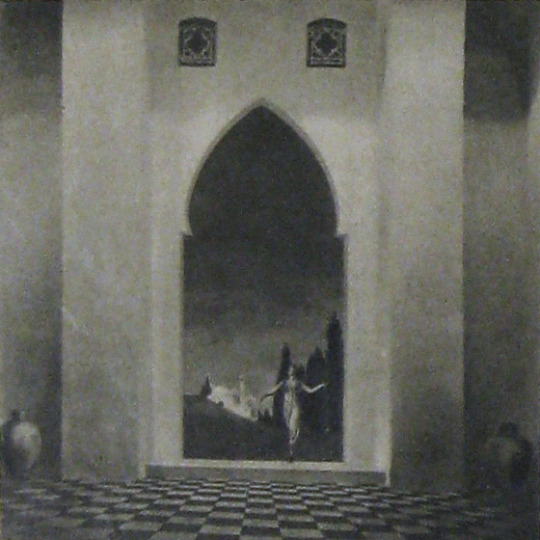



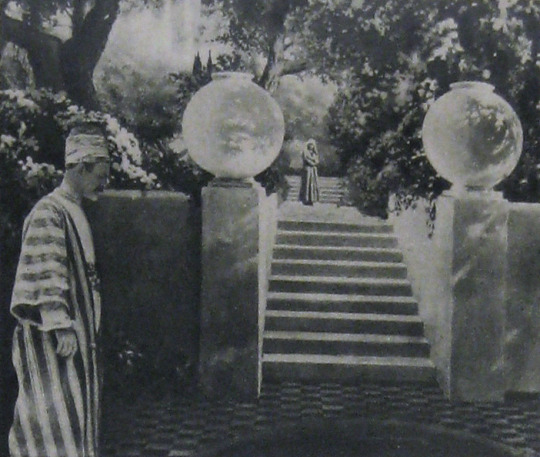
Alternate Titles: The Rubaiyat of Omar Khayyam, The Rubaiyat, Omar Khayyam, Omar
Direction: Ferdinand Pinney Earle; assisted by Walter Mayo
Scenario: Ferdinand P. Earle
Titles: Marion Ainslee, Ferdinand P. Earle (Omar), Louis Weadock (A Lover’s Oath)
Inspired by: The Rubaiyat of Omar Khayyam, as edited & translated by Edward FitzGerald
Production Manager: Winthrop Kelly
Camera: Georges Benoit
Still Photography: Edward S. Curtis
Special Photographic Effects: Ferdinand P. Earle, Gordon Bishop Pollock
Composer: Charles Wakefield Cadman
Editors: Arthur D. Ripley (The Rubaiyat of Omar Khayyam version), Ethel Davey & Ferdinand P. Earle (Omar / Omar Khayyam, the Director’s cut of 1922), Milton Sills (A Lover’s Oath)
Scenic Artists: Frank E. Berier, Xavier Muchado, Anthony Vecchio, Paul Detlefsen, Flora Smith, Jean Little Cyr, Robert Sterner, Ralph Willis
Character Designer: Louis Hels
Choreography: Ramon Novarro (credited as Ramon Samaniegos)
Technical Advisors: Prince Raphael Emmanuel, Reverend Allan Moore, Captain Dudley S. Corlette, & Captain Montlock or Mortlock
Studio: Ferdinand P. Earle Productions / The Rubaiyat, Inc. (Production) & Eastern Film Corporation (Distribution, Omar), Astor Distribution Corporation [States Rights market] (Distribution, A Lover’s Oath)
Performers: Frederick Warde, Edwin Stevens, Hedwiga Reicher, Mariska Aldrich, Paul Weigel, Robert Anderson, Arthur Carewe, Jesse Weldon, Snitz Edwards, Warren Rogers, Ramon Novarro (originally credited as Ramon Samaniegos), Big Jim Marcus, Kathleen Key, Charles A. Post, Phillippe de Lacy, Ferdinand Pinney Earle
Premiere(s): Omar cut: April 1922 The Ambassador Theatre, New York, NY (Preview Screening), 12 October 1923, Loew’s New York, New York, NY (Preview Screening), 2 February 1923, Hoyt’s Theatre, Sydney, Australia (Initial Release)
Status: Presumed lost, save for one 30 second fragment preserved by the Academy Film Archive, and a 2.5 minute fragment preserved by a private collector (Old Films & Stuff)
Length: Omar Khayyam: 8 reels , 76 minutes; A Lover’s Oath: 6 reels, 5,845 feet (though once listed with a runtime of 76 minutes, which doesn’t line up with the stated length of this cut)
Synopsis (synthesized from magazine summaries of the plot):
Omar Khayyam:
Set in 12th century Persia, the story begins with a preface in the youth of Omar Khayyam (Warde). Omar and his friends, Nizam (Weigel) and Hassan (Stevens), make a pact that whichever one of them becomes a success in life first will help out the others. In adulthood, Nizam has become a potentate and has given Omar a position so that he may continue his studies in mathematics and astronomy. Hassan, however, has grown into quite the villain. When he is expelled from the kingdom, he plots to kidnap Shireen (Key), the sheik’s daughter. Shireen is in love with Ali (Novarro). In the end it’s Hassan’s wife (Reicher) who slays the villain then kills herself.
A Lover’s Oath:
The daughter of a sheik, Shireen (Key), is in love with Ali (Novarro), the son of the ruler of a neighboring kingdom. Hassan covets Shireen and plots to kidnap her. Hassan is foiled by his wife. [The Sills’ edit places Ali and Shireen as protagonists, but there was little to no re-shooting done (absolutely none with Key or Novarro). So, most critics note how odd it is that all Ali does in the film is pitch woo, and does not save Shireen himself. This obviously wouldn’t have been an issue in the earlier cut, where Ali is a supporting character, often not even named in summaries and news items. Additional note: Post’s credit changes from “Vizier” to “Commander of the Faithful”]
Additional sequence(s) featured in the film (but I’m not sure where they fit in the continuity):
Celestial sequences featuring stars and planets moving through the cosmos
Angels spinning in a cyclone up to the heavens
A Potters’ shop sequence (relevant to a specific section of the poems)
Harem dance sequence choreographed by Novarro
Locations: palace gardens, street and marketplace scenes, ancient ruins


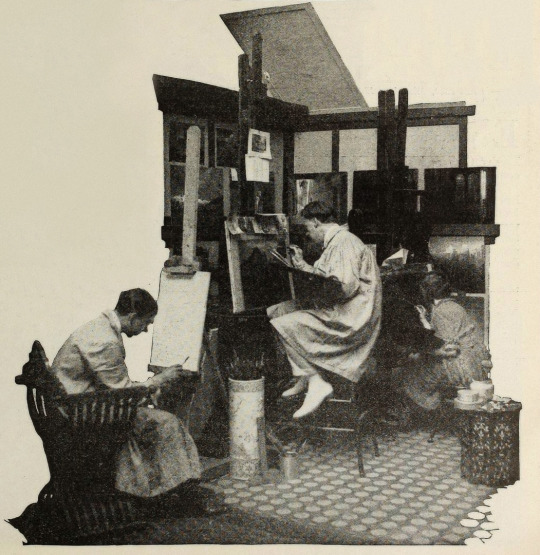


Points of Interest:
“The screen has been described as the last word in realism, but why confine it there? It can also be the last word in imaginative expression.”
Ferdinand P. Earle as quoted in Exhibitors Trade Review, 4 March 1922
The Rubaiyat of Omar Khayyam was a massive best seller. Ferdinand Pinney Earle was a classically trained artist who studied under William-Adolphe Bougueraeu and James McNeill Whistler in his youth. He also had years of experience creating art backgrounds, matte paintings, and art titles for films. Charles Wakefield Cadman was an accomplished composer of songs, operas, and operettas. Georges Benoit and Gordon Pollock were experienced photographic technicians. Edward S. Curtis was a widely renowned still photographer. Ramon Novarro was a name nobody knew yet—but they would soon enough.
When Earle chose The Rubaiyat as the source material for his directorial debut and collected such skilled collaborators, it seemed likely that the resulting film would be a landmark in the art of American cinema. Quite a few people who saw Earle’s Rubaiyat truly thought it would be:
William E. Wing writing for Camera, 9 September 1922, wrote:
“Mr. Earle…came from the world of brush and canvass, to spread his art upon the greater screen. He created a new Rubaiyat with such spiritual colors, that they swayed.”
…
“It has been my fortune to see some of the most wonderful sets that this Old Earth possesses, but I may truly say that none seized me more suddenly, or broke with greater, sudden inspiration upon the view and the brain, than some of Ferdinand Earle’s backgrounds, in his Rubaiyat.
“His vision and inspired art seem to promise something bigger and better for the future screen.”
As quoted in an ad in Film Year Book, 1923:
“Ferdinand Earle has set a new standard of production to live up to.”
Rex Ingram
“Fifty years ahead of the time.”
Marshall Neilan
The film was also listed among Fritz Lang’s Siegfried, Chaplin’s Gold Rush, Fairbanks’ Don Q, Lon Chaney’s Phantom of the Opera and The Unholy Three, and Erich Von Stroheim’s Merry Widow by the National Board of Review as an exceptional film of 1925.
So why don’t we all know about this film? (Spoiler: it’s not just because it’s lost!)
The short answer is that multiple dubious legal challenges arose that prevented Omar’s general release in the US. The long answer follows BELOW THE JUMP!
Earle began the project in earnest in 1919. Committing The Rubaiyat to film was an ambitious undertaking for a first-time director and Earle was striking out at a time when the American film industry was developing an inferiority complex about the level of artistry in their creative output. Earle was one of a number of artists in the film colony who were going independent of the emergent studio system for greater protections of their creative freedoms.
In their adaptation of The Rubaiyat of Omar Khayyam, Earle and Co. hoped to develop new and perfect existing techniques for incorporating live-action performers with paintings and expand the idea of what could be accomplished with photographic effects in filmmaking. The Rubaiyat was an inspired choice. It’s not a narrative, but a collection of poetry. This gave Earle the opportunity to intersperse fantastical, poetic sequences throughout a story set in the lifetime of Omar Khayyam, the credited writer of the poems. In addition to the fantastic, Earle’s team would recreate 12th century Persia for the screen.
Earle was convinced that if his methods were perfected, it wouldn’t matter when or where a scene was set, it would not just be possible but practical to put on film. For The Rubaiyat, the majority of shooting was done against black velvet and various matte photography and multiple exposure techniques were employed to bring a setting 800+ years in the past and 1000s of miles removed to life before a camera in a cottage in Los Angeles.
Note: If you’d like to learn a bit more about how these effects were executed at the time, see the first installment of How’d They Do That.
Unfortunately, the few surviving minutes don’t feature much of this special photography, but what does survive looks exquisite:

see all gifs here
Earle, knowing that traditional stills could not be taken while filming, brought in Edward S. Curtis. Curtis developed techniques in still photography to replicate the look of the photographic effects used for the film. So, even though the film hasn’t survived, we have some pretty great looking representations of some of the 1000s of missing feet of the film.
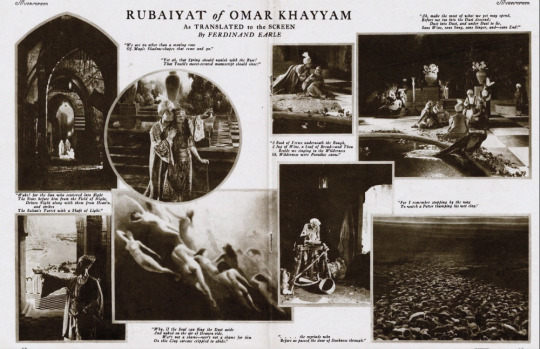
Nearly a year before Curtis joined the crew, Earle began collaboration with composer Charles Wakefield Cadman. In another bold creative move, Cadman and Earle worked closely before principal photography began so that the score could inform the construction and rhythm of the film and vice versa.
By the end of 1921 the film was complete. After roughly 9 months and the creation of over 500 paintings, The Rubaiyat was almost ready to meet its public. However, the investors in The Rubaiyat, Inc., the corporation formed by Earle to produce the film, objected to the ample reference to wine drinking (a comical objection if you’ve read the poems) and wanted the roles of the young lovers (played by as yet unknown Ramon Novarro and Kathleen Key) to be expanded. The dispute with Earle became so heated that the financiers absconded with the bulk of the film to New York. Earle filed suit against them in December to prevent them from screening their butchered and incomplete cut. Cadman supported Earle by withholding the use of his score for the film.
Later, Eastern Film Corp. brokered a settlement between the two parties, where Earle would get final cut of the film and Eastern would handle its release. Earle and Eastern agreed to change the title from The Rubaiyat of Omar Khayyam to simply Omar. Omar had its first official preview in New York City. It was tentatively announced that the film would have a wide release in the autumn.
However, before that autumn, director Norman Dawn launched a dubious patent-infringement suit against Earle and others. Dawn claimed that he owned the sole right to use multiple exposures, glass painting for single exposure, and other techniques that involved combining live action with paintings. All the cited techniques had been widespread in the film industry for a decade already and eventually and expectedly Dawn lost the suit. Despite Earle’s victory, the suit effectively put the kibosh on Omar’s release in the US.
Earle moved on to other projects that didn’t come to fruition, like a Theda Bara film and a frankly amazing sounding collaboration with Cadman to craft a silent-film opera of Faust. Omar did finally get a release, albeit only in Australia. Australian news outlets praised the film as highly as those few lucky attendees of the American preview screenings did. The narrative was described as not especially original, but that it was good enough in view of the film’s artistry and its imaginative “visual phenomena” and the precision of its technical achievement.
One reviewer for The Register, Adelaide, SA, wrote:
“It seems almost an impossibility to make a connected story out of the short verse of the Persian of old, yet the producer of this classic of the screen… has succeeded in providing an entertainment that would scarcely have been considered possible. From first to last the story grips with its very dramatic intensity.”
While Omar’s American release was still in limbo, “Ramon Samaniegos” made a huge impression in Rex Ingram’s Prisoner of Zenda (1922, extant) and Scaramouche (1923, extant) and took on a new name: Ramon Novarro. Excitement was mounting for Novarro’s next big role as the lead in the epic Ben-Hur (1925, extant) and the Omar project was re-vivified.

A new company, Astor Distribution Corp., was formed and purchased the distribution rights to Omar. Astor hired actor (note, not an editor) Milton Sills to re-cut the film to make Novarro and Key more prominent. The company also re-wrote the intertitles, reduced the films runtime by more than ten minutes, and renamed the film A Lover’s Oath. Earle had moved on by this point, vowing to never direct again. In fact, Earle was indirectly working with Novarro and Key again at the time, as an art director on Ben-Hur!
Despite Omar’s seemingly auspicious start in 1920, it was only released in the US on the states rights market as a cash-in on the success of one of its actors in a re-cut form five years later.
That said, A Lover’s Oath still received some good reviews from those who did manage to see it. Most of the negative criticism went to the story, intertitles, and Sills’ editing.
What kind of legacy could/should Omar have had? I’m obviously limited in my speculation by the fact that the film is lost, but there are a few key facts about the film’s production, release, and timing to consider.
The production budget was stated to be $174,735. That is equivalent to $3,246,994.83 in 2024 dollars. That is a lot of money, but since the production was years long and Omar was a period film set in a remote locale and features fantastical special effects sequences, it’s a modest budget. For contemporary perspective, Robin Hood (1922, extant) cost just under a million dollars to produce and Thief of Bagdad (1924, extant) cost over a million. For a film similarly steeped in spectacle to have nearly 1/10th of the budget is really very noteworthy. And, perhaps if the film had ever had a proper release in the US—in Earle’s intended form (that is to say, not the Sills cut)—Omar may have made as big of a splash as other epics.
It’s worth noting here however that there are a number of instances in contemporary trade and fan magazines where journalists off-handedly make this filmmaking experiment about undermining union workers. Essentially implying that that value of Earle’s method would be to continue production when unionized workers were striking. I’m sure that that would absolutely be a primary thought for studio heads, but it certainly wasn’t Earle’s motivation. Often when Earle talks about the method, he focuses on being able to film things that were previously impossible or impracticable to film. Driving down filming costs from Earle’s perspective was more about highlighting the artistry of his own specialty in lieu of other, more demanding and time-consuming approaches, like location shooting.
This divide between artists and studio decision makers is still at issue in the American film and television industry. Studio heads with billion dollar salaries constantly try to subvert unions of skilled professionals by pursuing (as yet) non-unionized labor. The technical developments of the past century have made Earle’s approach easier to implement. However, just because you don’t have to do quite as much math, or time an actor’s movements to a metronome, does not mean that filming a combination of painted/animated and live-action elements does not involve skilled labor.
VFX artists and animators are underappreciated and underpaid. In every new movie or TV show you watch there’s scads of VFX work done even in films/shows that have mundane, realistic settings. So, if you love a film or TV show, take the effort to appreciate the work of the humans who made it, even if their work was so good you didn’t notice it was done. And, if you’ve somehow read this far, and are so out of the loop about modern filmmaking, Disney’s “live-action” remakes are animated films, but they’ve just finagled ways to circumvent unions and low-key delegitimize the skilled labor of VFX artists and animators in the eyes of the viewing public. Don’t fall for it.
VFX workers in North America have a union under IATSE, but it’s still developing as a union and Marvel & Disney workers only voted to unionize in the autumn of 2023. The Animation Guild (TAG), also under the IATSE umbrella, has a longer history, but it’s been growing rapidly in the past year. A strike might be upcoming this year for TAG, so keep an eye out and remember to support striking workers and don’t cross picket lines, be they physical or digital!
Speaking of artistry over cost-cutting, I began this post with a mention that in the early 1920s, the American film industry was developing an inferiority complex in regard to its own artistry. This was in comparison to the European industries, Germany’s being the largest at the time. It’s frustrating to look back at this period and see acceptance of the opinion that American filmmakers weren’t bringing art to film. While yes, the emergent studio system was highly capitalistic and commercial, that does not mean the American industry was devoid of home-grown artists.
United Artists was formed in 1919 by Douglas Fairbanks, Charlie Chaplin, Mary Pickford, and D.W. Griffith precisely because studios were holding them back from investing in their art—within the same year that Earle began his Omar project. While salaries and unforgiving production schedules were also paramount concerns in the filmmakers going independent, a primary impetus was that production/distribution heads exhibited too much control over what the artists were trying to create.
Fairbanks was quickly expanding his repertoire in a more classical and fantastic direction. Cecil B. DeMille made his first in a long and very successful string of ancient epics. And the foreign-born children of the American film industry, Charlie Chaplin, Rex Ingram, and Nazimova, were poppin’ off! Chaplin was redefining comedic filmmaking. Ingram was redefining epics. Nazimova independently produced what is often regarded as America’s first art film, Salome (1923, extant), a film designed by Natacha Rambova, who was *gasp* American. Earle and his brother, William, had ambitious artistic visions of what could be done in the American industry and they also had to self-produce to get their work done.
Meanwhile, studio heads, instead of investing in the artists they already had contracts with, tried to poach talent from Europe with mixed success (in this period, see: Ernst Lubitsch, F.W. Murnau, Benjamin Christensen, Mauritz Stiller, Victor Sjöström, and so on). I’m in no way saying it was the wrong call to sign these artists, but all of these filmmakers, even if they found success in America, had stories of being hired to inject the style and artistry that they developed in Europe into American cinema, and then had their plans shot down or cut down to a shadow of their creative vision. Even Stiller, who tragically died before he had the opportunity to establish himself in the US, faced this on his first American film, The Temptress (1926, extant), on which he was replaced. Essentially, the studio heads’ actions were all hot air and spite for the filmmakers who’d gone independent.

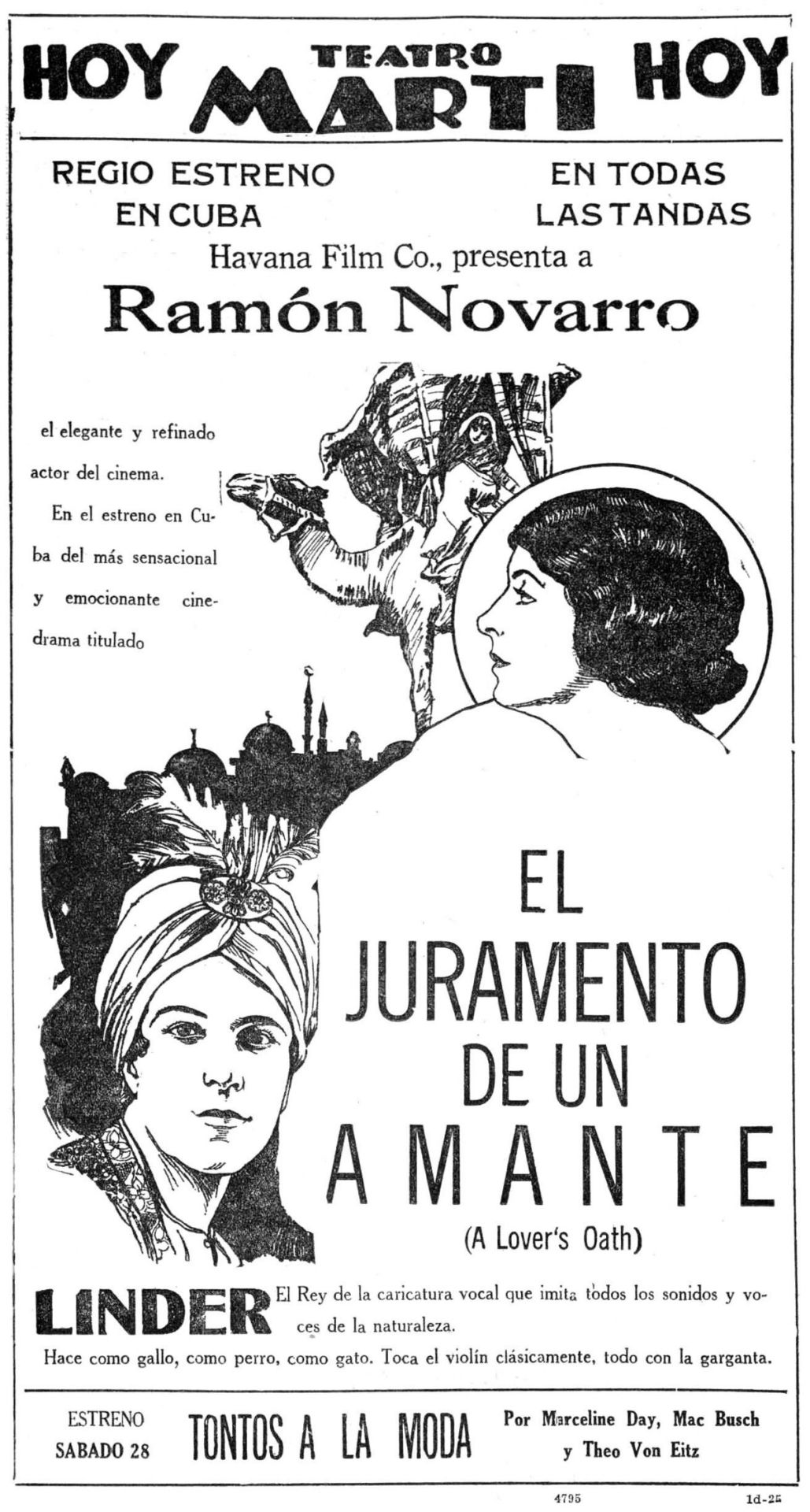
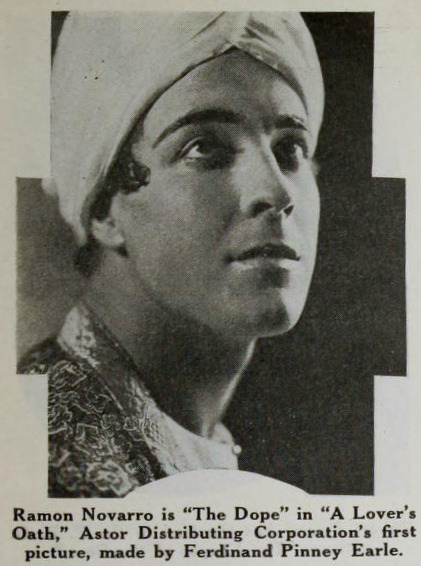
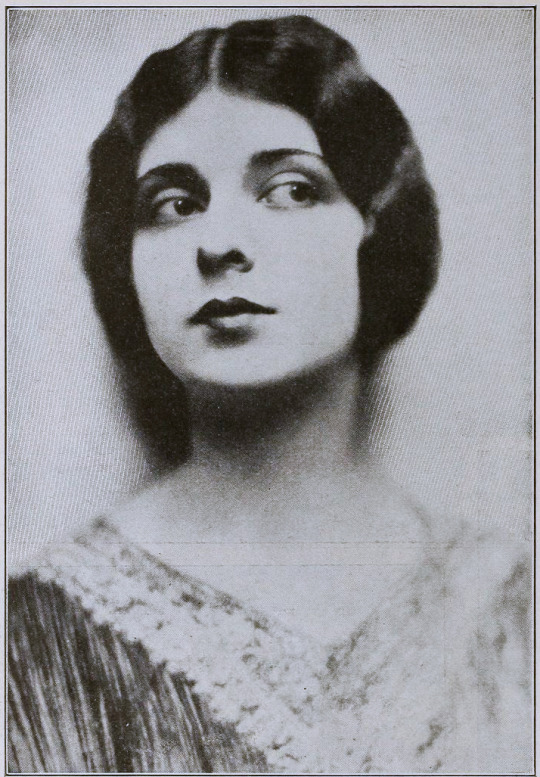
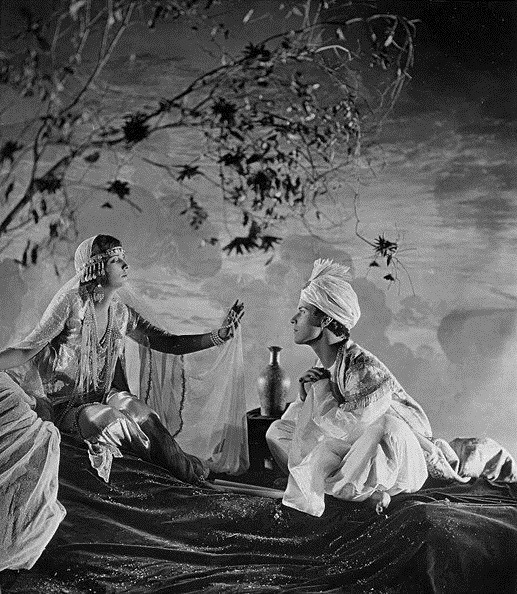
Finally I would like to highlight Ferdinand Earle’s statement to the industry, which he penned for from Camera in 14 January 1922, when his financial backers kidnapped his film to re-edit it on their terms:
MAGNA CHARTA
Until screen authors and producers obtain a charter specifying and guaranteeing their privileges and rights, the great slaughter of unprotected motion picture dramas will go merrily on.
Some of us who are half artists and half fighters and who are ready to expend ninety per cent of our energy in order to win the freedom to devote the remaining ten per cent to creative work on the screen, manage to bring to birth a piteous, half-starved art progeny.
The creative artist today labors without the stimulus of a public eager for his product, labors without the artistic momentum that fires the artist’s imagination and spurs his efforts as in any great art era.
Nowadays the taint of commercialism infects the seven arts, and the art pioneer meets with constant petty worries and handicaps.
Only once in a blue moon, in this matter-of-fact, dollar-wise age can the believer in better pictures hope to participate in a truely [sic] artistic treat.
In the seven years I have devoted to the screen, I have witnessed many splendid photodramas ruined by intruding upstarts and stubborn imbeciles. And I determined not to launch the production of my Opus No. 1 until I had adequately protected myself against all the usual evils of the way, especially as I was to make an entirely new type of picture.
In order that my film verison [sic] of the Rubaiyat of Omar Khayyam might be produced under ideal conditions and safeguarded from intolerable interferences and outside worries, I entered into a contract with the Rubaiyat, Inc., that made me not only president of the corporation and on the board of directors, but which set forth that I was to be author, production manager, director, cutter and film editor as well as art director, and that no charge could be made against the production without my written consent, and that my word was to be final on all matters of production. The late George Loane Tucker helped my attorney word the contract, which read like a splendid document.
Alas, I am now told that only by keeping title to a production until it is declared by yourself to be completed is it safe for a scenario writer, an actor or a director, who is supposedly making his own productions, to contract with a corporation; otherwise he is merely the servant of that corporation, subject at any moment to discharge, with the dubious redress of a suit for damages that can with difficulty be estimated and proven.
Can there be any hope of better pictures as long as contracts and copyrights are no protection against financial brigands and bullies?
We have scarcely emerged from barbarism, for contracts, solemnly drawn up between human beings, in which the purposes are set forth in the King’s plainest English, serve only as hurdles over which justice-mocking financiers and their nimble attorneys travel with impunity, riding rough shod over the author or artist who cannot support a legal army to defend his rights. The phrase is passed about that no contract is invioliable [sic]—and yet we think we have reached a state of civilization!
The suit begun by my attorneys in the federal courts to prevent the present hashed and incomplete version of my story from being released and exhibited, may be of interest to screen writers. For the whole struggle revolves not in the slightest degree around the sanctity of the contract, but centers around the federal copyright of my story which I never transferred in writing otherwise, and which is being brazenly ignored.
Imagine my production without pictorial titles: and imagine “The Rubaiyat” with a spoken title as follows, “That bird is getting to talk too much!”—beside some of the immortal quatrains of Fitzgerald!
One weapon, fortunately, remains for the militant art creator, when all is gone save his dignity and his sense of humor; and that is the rapier blade of ridicule, that can send lumbering to his retreat the most brutal and elephant-hided lord of finance.
How edifying—the tableau of the man of millions playing legal pranks upon men such as Charles Wakefield Cadman, Edward S. Curtis and myself and others who were associated in the bloody venture of picturizing the Rubaiyat! It has been gratifying to find the press of the whole country ready to champion the artist’s cause.
When the artist forges his plowshare into a sword, so to speak, he does not always put up a mean fight.
What publisher would dare to rewrite a sonnet of John Keats or alter one chord of a Chopin ballade?
Creative art of a high order will become possible on the screen only when the rights of established, independent screen producers, such as Rex Ingram and Maurice Tourneur, are no longer interferred with and their work no longer mutilated or changed or added to by vandal hands. And art dramas, conceived and executed by masters of screen craft, cannot be turned out like sausages made by factory hands. A flavor of individuality and distinction of style cannot be preserved in machine-made melodramas—a drama that is passed from hand to hand and concocted by patchworkers and tinkerers.
A thousand times no! For it will always be cousin to the sausage, and be like all other—sausages.
The scenes of a master’s drama may have a subtle pictorial continuity and a power of suggestion quite like a melody that is lost when just one note is changed. And the public is the only test of what is eternally true or false. What right have two or three people to deprive millions of art lovers of enjoying an artist’s creation as it emerged from his workshop?
“The Rubaiyat” was my first picture and produced in spite of continual and infernal interferences. It has taught me several sad lessons, which I have endeavored in the above paragraphs to pass on to some of my fellow sufferers. It is the hope that I am fighting, to a certain extent, their battle that has given me the courage to continue, and that has prompted me to write this article. May such hubbubs eventually teach or inforce a decent regard for the rights of authors and directors and tend to make the existence of screen artisans more secure and soothing to the nerves.
FERDINAND EARLE.
---
☕Appreciate my work? Buy me a coffee! ☕
Transcribed Sources & Annotations over on the WMM Blog!
See the Timeline for Ferdinand P. Earle's Rubaiyat Adaptation
#1920s#1923#1925#omar khayyam#ferdinand pinney earle#ramon novarro#independent film#american film#silent cinema#silent era#silent film#classic cinema#classic movies#classic film#film history#history#Charles Wakefield Cadman#cinematography#The Rubaiyat#cinema#film#lost film
41 notes
·
View notes
Text
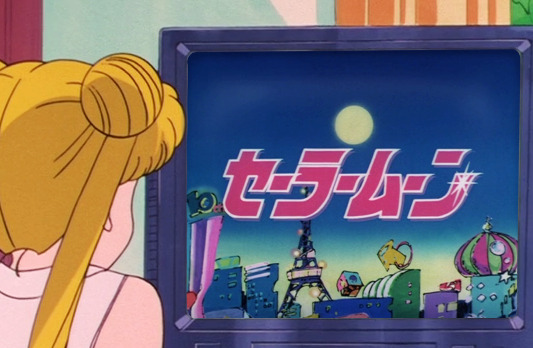
Welcome to the 2024 Sailor Moon Rewatch!
Every week, we collectively watch four episodes of the Pretty Guardian Sailor Moon (1992) anime. Participants then discuss, celebrate, and create around those four episodes and tag their posts with #SailorMoonRewatch2024. By the end of 2024, we will have rewatched all 200 episodes!
What do I do?
You can engage as much or as little as you'd like. After watching (up to & including) the current week's episodes, you can reply to the discussion posts made on this blog, or make your own posts! Tagged posts have a chance of being reblogged here.
Did you take the perfect screencaps? Did you think a particular scene was funny, moving, intriguing, or fell flat? Has an episode changed or strengthened your perception of a character? Did something in the episode inspire you to draw, write, cook, edit, sew, sculpt, or otherwise make something? Did you realise you can perfectly closet-cosplay an outfit from one of the newest episodes? Have you themed your TV snacks around an upcoming plot? That's exactly the kind of stuff we want to see in the tag!
But, if you'd prefer, you're also welcome to simply sit back and scroll through the blog/tag, liking posts as you watch the series alongside everyone.
Where can I watch Sailor Moon?
Legally, you can purchase Viz's new official DVDs or Blu-rays, or you can stream the series on Hulu, Tubi, or Pluto TV.
Which version of Sailor Moon is this rewatch for?
This rewatch is about the first anime series, "Bishoujo Senshi Sailor Moon" (1992) aka "Pretty Guardian Sailor Moon" (1992), not Sailor Moon Crystal (2014) - though if this rewatch is successful, there may be a group Crystal rewatch in the future!
Do I have to watch a specific dub?
Not at all! This sub uses the official Viz translations of episode titles, but you are free to watch in any release of any language dub. You can watch subtitled in Japanese, you can watch the old Dic/Cloverway dubs, or you can watch in any dubbed language you like.
If the rewatch covers an episode that was cut from the dub you're watching, you can elect to simply skip that episode or temporarily swap to a different dub/sub.
What if I get ahead of the rewatch?
That's fine! We just ask that you keep your tagged posts to the current episodes. Part of the goal of this event is to introduce new viewers to the series, and keeping to the schedule helps these first-time Moonies avoid spoilers. If you want to watch ahead, save up your notes/art/etc and then post them here when the relevant week comes 'round. That's what makes it a group event!
What if I'm late or get behind?
That's also fine! You can jump in any time and catch up on missed episodes at your leisure, or choose to simply start at whatever episode the rewatch is up to and fill in the gaps for yourself.
Similarly, you can choose to skip any episodes at any time for any reason. Episodes will be flagged with relevant content warnings in the week's introduction post.
The first four episodes will be covered over the first two weeks of 2024 in order to give people more time to join. After this, each single week will typically cover four episodes. You can see the full schedule here!
41 notes
·
View notes
Text
Who and What Really Inspired E.M. Forster's Maurice?
(Inspiration and source for this post: "Edward Carpenter and the Double Structure of Maurice" by Robert K. Martin, Ph.D.)
WE KNOW that E.M. Forster was directly influenced by Edward Carpenter (and his life with a lower class man, George Merrill) to write the happy ending of Maurice. Forster himself was a disciple of Carpenter; specifically, he subscribed to Carpenter's belief in the "Uranian" love (love and loyalty between two men that can include a physical relationship). Forster said in the Terminal Notes of Maurice that Maurice and Alec are capable of such love and loyalty—as defined by Carpenter—between each other.
But it wasn't Carpenter who first "invented" that idea of love and loyalty; it was, in fact, Carpenter's influencer and mentor, American poet Walt Whitman.
Carpenter was a disciple of Whitman, and Forster was a disciple of Carpenter. Below, the texts from each's relevant works in chronological order will enlighten on the origin of the inspiration behind Maurice—i.e., what made the happy ending between Maurice and Alec possible, way before Forster even knew Carpenter.
—Walt Whitman in 1856: "Song of the Open Road" from Leaves of Grass
Camerado, I give you my hand!
I give you my love more precious than money,
I give you myself before preaching or law;
Will you give me yourself? will you come travel with me?
Shall we stick by each other as long as we live?
—Edward Carpenter in 1902: "Hafiz to the Cupbearer" from Towards Democracy
"Come, son (since thou hast said it), out of all Shiraz
Háfiz salutes thee comrade. Let us go
A spell of life along the road together."
(FYI: this poem was written by Carpenter to commemorate Merrill braving a blizzard to finally move in with him in 1898.)
—E.M. Forster in 1914 and 1932: Maurice (published in 1971)
“Did you ever dream you had a friend, Alec? Someone to last your whole life and you his." (First written in 1932.)
"They must live outside class, without relations or money; they must work and stick to each other till death. " (First written in 1914.)
"He could die for such a friend, he would allow such a friend to die for him; they would make any sacrifice for each other, and count the world nothing, neither death nor distance nor crossness could part them, because 'this is my friend.'" (First written in 1914.)
It's as if Whitman originated the idea of finding a friend who would last his whole life, and whose love is valued above class and society;
and he instilled it into Carpenter who later was able to live out that idea in real life with Merrill;
and Forster, having witnessed that idea lived out in real life through Carpenter and Merrill, wrote it into fiction so that it's lived out through Maurice and Alec—"for the ever and ever that fiction allows,” in the greenwood.
That's the very symbolic meaning of Maurice and Alec roaming the greenwood: Carpenter and Merril weren't immortal, so their love for each other obviously wouldn't last forever in that literal sense; Forster knew that, but he did what others couldn't: he immortalized their love and Whitman's idea of "Someone to last your whole life" through Maurice, so that for as long as Maurice and Alec roam the greenwood, the love between Carpenter and Merril would live on even if not in real life, and Whitman's idea would thus never die.
Whitman's philosophy is like an heirloom passed down from him to Carpenter to Forster. The connection is more in the clear if you put Forster's and Whitman's lines side by side:
"They must live outside class,
without relations or money;
they must work and stick to each other till death."
VS
"I give you my love more precious than money,
I give you myself before preaching or law;
...
Shall we stick by each other as long as we live"
#em forster#maurice#maurice 1987#maurice em forster#maurice hall#alec scudder#em forster maurice#clive durham#edward carpenter#george merrill#james ivo#james ivory#james wilby#hugh gr#hugh grant#rupert graves#lgbt#lgbt fiction#lgbt his#lgbt history#gay#gay novels#gay his#gay history#gay boo#happy en#happy ending#walt whitman
143 notes
·
View notes
Text
Breeding Stud Thunderclash Training AU #1
Inspired by @mychlapci’s breeding stud post which is linked here. The concepts. The concepts. Especially applied to Rodiclash. But a little to the left.
TW: Breeding, Edging, Orgasm Denial, Overstimulation, Dubious Consent Due to Society, Heat/Rut, Consensual Drug/Aphrodisiac Use, Consensual At Least, Mechpreg (Only Implied For Now)
PART I – Setup
The background for this is that even with MTOs to supplement their forces, supplies (and people) were still limited until Autobots found away to increase the fertility rates of heat/rut cycles and artificially stimulate them. This created something called Breeding Duty. It could be voluntary but was somewhat like jury duty only based of an individual’s base fertility rates. If chosen an Autobot was required to serve out through one “Breeding Season” to increase the population. This is how “warborn” mechs like Fortress Maximus were born yet not MTOs.
Breeding Season meant a mech being assessed for fertility both in carrying and siring and then after full checkups and necessary repairs being forced into training and then inducing a constant heat/rut until they were either Sparked or Sparked a required amount of mechs or the set time passed unsuccessful. They would then serve out the rest of the time either moving between carriers and supplying transfluid donations (studs) or carrying to term (Sparked mechs). Once their service time passed, they would return to the front lines. Some though, especially if they were prone to bonding could instead request to continue raising their new Spark until they were old enough to start their education. This was offered to both the stud and the carrier and either could chose or completely surrender custody to the Autobots.
Although given the choice when they were adults to swear to the Cause or become Neutral most were already so loyal due to propaganda they immediately enlisted or signed up for relevant training to benefit the Autobots some other way.
This turned out to be a fairly safe a peaceful job and some retired to it permanently or were recommended for it if they were stressed or even volunteered.
Rodimus actually volunteered frequently as it soothed something in him to create instead of kill and he enjoyed interface and he was also hyper fertile and basically always successful. He in fact had a reputation as one of the Autobot’s premier studs. He even took paternity leave to raise some of his Sparklings if their carriers gave up custody. In total Rodimus knows he has seven Sparklings, all of whom he kept track of, and three of which he took the time to raise. He was so well known he actually hired himself out to private couples who reproduced as people could fulfill the duty with their partner(s) if they desired and as long as a Sparkling came out of it no one cared how. Some people even made a habit of tracking down or seducing Decepticons as a hobby.
Admittedly, of the three he raised one became a Decepticon, one became an Autobot, and one left to go become a Neutral. He’s proud of all of them.
This is one of the few things Rodimus knows he can hold over Thunderclash. Thunderclash was injured before the initiatives started due to population decline. He’s Spark couldn’t handle the stress required to fulfill either role. So Thunderclash hasn’t interfaced in literally thousands of years due to not wanting to tax his system.
It comes up at Swerve’s because people gossip and Rodimus was laughing because “one of his” was mentioned as being in Starscream’s Biop that Thundercracker was doing, playing him. Rodimus was busy laughing, genuinely delighted by an update about Flamewar, while Megatron had to deal with the new knowledge of Autobot Breeding Programs and more specifically that Rodimus had reproduced multiple times, which of course triggers old gossip and Rodimus preening and smirking about his “powers”, which a few on the Lost Light can personally attest to.
Thunderclash hears and immediately get flustered, but also realizes he could kill two birds with one stone and plans it out and approaches Rodimus privately in his suite. Rodimus is suspicious and hostile, while Thunderclash is flushed, aroused because the idea hasn’t left his mind, and a little timid. He eventually gets out that he is here to request that Rodimus assists with training him to be a stud as he is long behind in fulfilling the duty and knows that there are several onboard who are registered to carry and Thunderclash wants to fulfill his duty.
Rodimus’s first instinct is to reject him but that instinct is immediately beaten by horny thoughts. Specifically of everything that training could entitle and having Thunderclash under his heel to bully as much as he wants. Sexually. He literally freezes as his own arousal shoots immediately through the roof when to try and distract himself he snaps that it would only work if Thunderclash does exactly everything he says no matter how outrageous and opens with telling him to get on his knees, arms behind his back and legs spread. Thunderclash’s engine gives a very loud roar before immediately obeying and looking at Rodimus like he hung the moon and Rodimus is a.) isolated and lonely and repressed sexually currently and b.) riding the high of this.
He grabs Thunderclash’s face and looks at him, noting he is still absolutely placid and actually steaming a little the closer Rodimus gets and the obvious and clear attraction is very, very heady so Rodimus agrees.
He then spends a week working intensely to build a training regime for Thunderclash, getting his medical records from Velocity wit Thunderclash’s approval, diverting the ship to due some shopping, and placing some special requests with Brainstorm while building his “curriculum”. The entire time they are both getting more and more tense and ready to start and Thunderclash has been dreaming about Rodimus using him as his personal stud, while Rodimus has been not sleeping making more and more elaborate sketches of Thunderclash in a variety of positions and harnesses and gear for his requests for Brainstorm who is keeping this secret but placing some bets and absolutely enjoying the drama from his corner.
This all builds up of course to Rodimus sending Thunderclash a start date and reinstating his own paperwork, but, after thinking about, rechecking the box for carrier just in case.
43 notes
·
View notes
Note
could you make a post about all the books from comedians you own/have ordered and which are your favorites I want to buy all of them but don't know where to start ++++++++ would love to know if you know of a way to order a signed copy of David's book if I don't live in the UK
you know, in a stroke of what may be relevant information, i'm actually an editorial director by day and even used to be a literary agent here in nyc — none of which is obvious on account of my billion rushed typos and...just...general existence :) (i promise i'm supremely carefully handed in my editing!!! and have a lot of resources, at my job hahahahaha oh god maybe i shouldn't have mentioned this!!!) — but i'm really no book critic and have no idea how my tastes stack up against what a lot of you are looking for. i'm happy to share some of my general, poorly articulated internet thoughts but it may be more worth checking out goodreads or talking with others who have more experience with autobiographies (which a majority of these types of books are)!
to begin with a disclaimer, one of my friends texted me recently, "why do you only watch sad movies?" i love sad films, sad music, i love to cry, catharsis, sentimentality which is always a little self-indulgent. it's a bit ironic, because this is a comedy blog and you guys know me as someone who loves to find things to laugh about and i fill my life with so much silliness through his huge, life-long hobby, but, all the same, that is only one side of me, i guess. i'm saying this now because you're about to hear me talk briefly about a few somewhat-to-incredibly sad books and be like "oh i didn't know this what i was getting into" 😅
books i do recommend:
just ignore him by alan davies — this isn't a book review but i am self-conscious about just how i describe this book, because it's so sensitive and i carry a lot of respect for alan. at the time of publication, alan actually didn't want any of the press to know and/or discuss the most tragic elements of the book, so readers wouldn't be influenced in any direction before confronting it themselves. (it's okay to talk about now of course, and anyone should know there are major trigger warnings for death, child abuse, sexual abuse, and pedophilia.) it is a sad book about his earliest years: the complexities and nuances of male power and manipulation, of unimaginable loneliness, of a lost child. alan said it wasn't cathartic to write—that is was indeed very painful—but the vulnerability, the commitment to shirking himself of the painful silence he endured for most of his life, is exceptionally moving. alan's writing can be quite thorough, even flowery, in creating vivid places and images, so so much of the heaviness feels piercing and even disturbing. if you read other comedians' books, a decent majority of them are written in the style of standup or, say, a ted talk — with performance in mind, specific structures and beats that mimic how they'd tell these stories on stage. i would argue this is quite different to that, that while the writing is in a style and structure that benefits being read aloud this is a very different alan to alan the performer. and, very honestly, i'm really not an audiobook person, not to mention listening is a wholly different experience to reading — but the audiobook for this is phenomenal: alan narrates and, while of course it's his story so he'll tell it best, he is a very gentle, thoughtful storyteller. this will be you by chapter 4:

moab is my washpot + fry chronicles by stephen fry — the first and second of his three autobiographies covering some of the most sensational times (stephen is willing to admit) of his childhood and teen years + his rise to fame through the cambridge footlights. these are good reads for 1) stephen fry fans duh and 2) people who can enjoy the inspiration of auden, waugh, wilde, wodehouse, quintessential english writers who inform the foundation of stephen's relationship with literature and appreciation. stephen is painfully honest — and often sorry for it, apologising for what he perceives to be his shortcomings — and you can't help but feel, even early on in the first book, that his view of his own world is somehow even more subjective than everyone else's views of their own worlds. maybe it's because he's so judgmental, maybe it's his oscillating mental health, maybe it's the shocking thrust with which he was confronted with the wideness of the world...i'm not sure, but stephen's life through stephen's eyes is so very stephen-y. i think that's why we love him‚ though i can see some people loathing the less admirable sides of him, which he does show, so don't read this if you want to maintain some image of him that helps you cope or keeps you perfectly entertained. if you're not british, the fry chronicles is an especially good read to scratch some of your anglophilic interests (lotsss of namedropping and backstage chat)!
delicacy: a memoir about cake and death by katy wix — one of my recent faves and another book that isn't thoroughly funny. told in 21 vignettes either centered around or vaguely related to cake, katy talks about her school life, grief and loss, self-esteem and body image, misogyny — in ways that are just...matter of fact...opposed to lessons learned or things she's working on through therapy. she's accepted a lot, but she's also afflicted by a lot to this day; she's capably honest about where her reality stands. for this reason, it can be a bleak and certainly very raw read. i listened to the audiobook for this one, which was nice, but i much recommend the actual written book as the vignettes are in different formats (short story prose, letters, email exchanges) that often anchor time and place, intention, even the little peeks of light of comedy. katy's writing is very lovely, both my heart and mind were touched.
back story by david mitchell — a mildly vulnerable, moderately insightful, and quite humorous exploration of david's up-and-coming years. i really appreciate the premise — due a bad back and sciatica, he begins taking very long walks every day, and these walks trigger memories and anecdotes as he passes certain places — that really doesn't come off as a gimmick. it's a very easy read (or listen) and what i'd consider an uncomplicated, unproblematic bio, but it would be difficult to enjoy if you're only a casual fan of david mitchell or only like him in his most recent dad years, as it was written in his peep show heyday and is so much about those years of his life, his relationship with robert webb, etc. a good intro-to-the-genre book and the very first britcom book i read way back in 2010!
i also really enjoy graham norton's books — especially for the goss, but he's a great writer and his debut fiction novel got quite good reviews! — and tim key's books of poetry, though you really need to be a fan of tim key to read tim key :')
books i do not recommend:
before & laughter by jimmy carr — this book is much less of an autobiography (details are scant and anecdotes are few; it's cute when he refers to karoline as "my girl") and much more a collection of 1) jimmy's interpretation of contemporary comedy and what it means to be a comedian, and 2) how that journey, and his evolving attitudes, shaped him + became advice he would offer to others. this is why he calls the book adjacent to self help & motivational speaking. i don't think it teaches you anything new about him — literally or as an writer — so i don't recommend reading it, though the audiobook (where he's truly performing the writing like a ted talk) is an easy listen. a lot of people will not understand that jimmy is overwhelmingly sincere in regards to all of the topics and personal philosophies the jimmy nearing 50 espouses. he's someone with very studied, thorough personal philosophies (if you've seen him on podcasts talking about his life and career then you'll know just what i mean) and he explains them deftly, but they can feel a bit...how should i say this...flat to people who have heard a lot of it before, in hollywood movies or from their own parents or wherever. he didn't write this just for another stream of income — he is passionate about these conversations and that counts for something. overall i already knew a bit about the guy and didn't need this.
my shit life so far by frankie boyle — i have never read one of frankie's fiction novels (crime is really not my thing, so someone needs to let me know if richard osman's book series is a smash because i'm only going to check them out if i'm convinced to), but as a long-time fan of his, knowing how much of a wordsmith he is, and how intentional he is in everything he says, i was surprised by how dull i found this. his shit life was just that — uninteresting, meandering. his anecdotes may have worked better aloud than on paper, but they didn't grab me. you learn a bit about his young adulthood, but like jimmy he's intensely private and i could feel that distance between us even while reading an autobiography. it didn't work for me, super sad about it :(
can everyone please calm down? by mae martin — instead of criticising this book, i'd rather just make a disclaimer or two. if you are already engaged in queer discourses and dialogues, you are not going to learn very much from this book. both the descriptive writing and presentation of research is "accessible" to the point i'd call it more adjacent to YA than adult literature; if you prefer more creative, complicated, and/or signature writing styles, this book is not for you. if you are a big fan of mae martin and would appreciate an overview of their journey on the identity spectrum (going so far as to even rejecting it, in some capacities) in one place, then this may be convenient — but even then, at this point, it's somewhat outdated. imo a well-intention skip.
phil wang and tom allen are two more i think don't convince me with their writing, but i'm still making my ways through a couple of books and could probably talk more about this later!
i have never made this kind of non-fiction bio a priority on my long reading list, so i still have a lot of exploring and catching up to do, but i'm finding that i do prefer the books that explore the events of comedian's past as well as those that walk the reader through experiences in the comedy & tv industries. there are a lot of books about mental health and identity, which may be more of what many of you are looking for (sara pascoe, fern brady, jon richardson, and more).
okaY PHEW SORRY i always type too much 😒
first, as for david mitchell's new book, you can order it signed from waterstones as they ship to the usa — and it's currently half off!!!!! if you want to buy it unsigned from a usa retailer amazon is cheapest and target & bookshop are the cheapest non-amazon options :) an audiobook is coming out as well, so i do believe i will be able to add that to googledrive before too long, but no guarantees on a good time frame!
you can go here to download any of the ebooks & audiobooks i have on my googledrive!
35 notes
·
View notes
Text

The alarming path of the Canadian school system:
Over the course of the three and a (little over) half years I have spent in high school I’ve noticed quite a few alarming changes. This post covers most of them.
If you require a trigger warning for opinions that aren’t far left: This is your only warning. Don’t try to debate me. I’m not debating anyone. I’m stating my opinions. I will block you if you try to argue with me. I do not have the time to argue with people on Tumblr about common sense.


Grade 10 Canadian History
The first thing I want to talk about is what inspired this post. I once knew a guy who took Canadian History Since World War One and got a 95 in the class but did not know what the Holocaust or Nazi’s were. He was 16 when we had this conversation. And got a 95 in a class where an entire unit was about World War Two. The one thing he did remember? Japanese internment.
By sticking the word “Canadian” at the start of the course name they have created a course where you can learn about World War Two and never hear a single mention of the Holocaust or Nazi’s. Or even anything outside of Canada for that matter. Even stranger is they additionally failed to mention that the Japanese were not the only people in internment camps. Cause y’know it’s apparently not relevant that German’s, Italian’s, Jewish refugees and very strangely Mennonite’s were also put in them… And I don’t just mean German and Italian POW’s. I mean citizens of Canada who happened to have ancestry from either country.
Why is there only education about it happening to the Japanese? Why don’t we talk about the German’s and Italian’s also imprisoned for no reason? Suddenly considered a national security threat because their ancestors lived in a country they’d in many cases never even stepped foot in… Or the Jewish refugees who got put in the same camps as German POW’s and it took a rather long time for them to be moved to their own camp to protect them from the violence they faced when put with the German’s.
We only learn about the Japanese interment and honestly I think it’s because they’re the “most important” group according to so called egalitarians. The German’s and Italian’s were European so “they can’t be oppressed” and when in history have you seen Jewish people get treated properly? They’re easy to let fall under the radar because when you think of Jewish people in World War Two nobody thinks of Canada.
Grade 12 English
My grade 12 English teacher started off the class by giving us a speech about racism. This was not the “black voices” English class available for grade 12 students. This was a regular English class. Which additionally I think dedicating an entire class to talking about a race is more racist than not but whatever floats their boat I guess. Anyway, the first day he went on a speech about racism. About how black mothers and their kids show love to each other differently. About how abusing your kids is okay if your black because “it’s in our culture”. THE FIRST DAY. Not even into the class with some form of context to make it make sense. That was how he started the class and introduced us to himself.
Additionally, when we talked about the feminist lens in literature we got told being nurturing is a negative thing. Not that it’s not okay to assume all women are made to be nurturers. That being nurturing is a bad thing.
This same teacher also spent the entire semester making fun of housewives. Consistently saying they’re lazy and taking the easy way out.
This man was 31. He’s on the lower end of teachers ages. This is what the new generation of teachers is going to be like and that terrifies me for my future kids if I ever have kids. Especially since many countries have made homeschooling illegal specifically so they can teach your kids how they want them to view the world. While it is legal in Canada (where I live now, obviously) I do intend to move somewhere it’s illegal eventually and that’s genuinely very concerning to see.
Grade 12 World History
My grade 12 World History teacher gave us an entire lesson about how the existence of world maps is racist.
“Why?” You may be wondering.
Because “Europe is bigger than the other continents to show superiority.”
May I now present to you… A map of the world. In which it is clear both the Northern and Southern hemispheres well beyond Europe are larger. Because the Earth is a sphere. And that is how you map out a sphere.

In fact I even think it’s arguable to say Europe looks kind of tiny on here aside from Russia. Which Russia is literally the biggest country in the world so it’s not shocking that they’re noticeable. Unless the problem with these maps is that they’re accurate to the world and it being a sphere?
Additionally, I was curious where my history teacher got nonsense like this. So I googled it. There is no mainstream sources saying this. It is all obscure websites online. Websites a history teacher should never touch when planning a lesson.
Also it was literally a question on the exam. Here’s some proof if you don’t believe me:

There was also multiple times she said white people should be sorry for existing. Please note now that this teacher herself is white. She’s genuinely been convinced her own existence is problematic.
She also once spent an entire class trying to convince us race doesn’t exist and humans made it up. I don’t even know where she got that one from but it uh… It does. You can argue that in most cases “race” refers to species but we all understand that in this context it doesn’t and she knew it didn’t. She genuinely tried to convince us different skin colours don’t exist and there’s no physical difference between different races. Which while it’s not inherently true that races have physical factors beyond skin colour ethnicity does. And more often than not someone’s race and ethnicity correlate and you can guess one based on the other to some extent even if it’s only narrowed down to a continent. Don’t nitpick with what words mean. We all know we use these words interchangeably and that they are interchangeable in real conversation even if they aren’t by their definition.
Another thing: We had an entire lesson on how the existence of European history is inherently wrong. Essentially getting told Europe should not exist. She completely glossed over the fact that every continent has had countries invade others. In fact when she did talk about other continents countries invading places she gave us a whole sob story about why it was okay that those people k*ll3d people but oh no it’s oh so different when a European country did it.
The biggest thing was when she completely skipped over the entire First World War because “it’s European”. A) WORLD war. B) ONE OF THE MOST IMPORTANT EVENTS IN HISTORY. But no you can’t teach that because it involves Europeans.
I also once got told to write an assignment about how to create a society where everyone in it is far left politically. I had to ask someone how to reword “show the children propaganda” in order to complete that assignment because that is genuinely the only way to create a society like that. Even the person I was explaining it to said it was insane. Because it was literally an assignment to write about how to create a dictatorship where we weren’t allowed to make it sound like that was what it was or we’d get in trouble for not agreeing with what we were being told to believe.
Morning Announcements
I don’t know if America does this but Canadian schools replaced the pledge to the flag with the land acknowledgment.
Don’t get me wrong I’m not denying that this land belongs to native people. No what I’m saying is that I don’t think they want to be reminded every single morning with a 5 minute speech about how their land was stolen.
Personally I’m more of a European’s moving back to Europe person. I don’t have anything against the indigenous peoples of North America. I want to leave specifically because this is not my land.
However, taking out the pledge to remind people their land was stolen feels more disrespectful than just saying the pledge and respecting the country??
People can argue that the flag has been used to disrespect indigenous people but the Canadian flag used by those types of people is the red ensign flag. They do not use the maple leaf flag to spread hate. They use the red ensign flag. Or they just walk into the capital with Nazi flags because that happened in 2022. Yet somehow there was more silence surrounding actual Nazi flags than our national flag. More people in this country hate our national flag than actual Nazi flags. You objectively have your priorities beyond fucked up if you think that way.
Why Is This Alarming
So, why do I find this so alarming?
Because it’s pushing the idea that we as a nation need to have one collective opinion and world view. Doesn’t that sound reminiscent of something?
…Maybe oh I dunno…
The beginning of a dictatorship?
Dictatorships start with propaganda in schools. What exactly does this all sound like? Propaganda in schools. Historically we hear about dictatorships and think of fascism. Fascists are not the only people capable of dictatorship. Left wing dictatorship is more than possible and is not a positive thing for anyone no matter what their opinions are.
By no means am I calling Canada a dictatorship. It’s not. I am incredibly grateful for the rights and freedoms this country gives me and I hate when American’s try to make it sound like a dictatorship. But this is objectively a very alarming path that Canadian schools have been taking and I do feel it’s necessary to address this.
This is the type of issue that people will hate anyone who calls it out right now but some day people will ask why nobody did anything about it.
Let me remind you of one thing: Nothing in history has happened overnight. It’s always been built over time. It’s always “oh just one tiny thing” “oh one more tiny thing” until it’s not one tiny thing. It’s a bunch of tiny things stacked up in a trench coat except the trench coat is made of tiny things.
I know to many people all these things sound good. But you need to realize they’re not. They’re harming this country far more than they will ever benefit it.

#tw politics#political#tradblr#traditional#traditionalism#traditional lifestyle#traditional living#catholic#traditional relationships#traditional values#trad#traditional gender roles#traditional marriage
13 notes
·
View notes
Text
Thoughts on TBB s2 finale
Spoilers under the cut. Most of this is a compilation of thoughts I’ve previously expressed on twitter and discord so nothing new to some of you perhaps!
Disclaimer: I still love the show with my whole heart and greatly respect the hard work of everyone who worked on it, so please don’t hate on the show in replies and comments to this post. Either keep it to relevant constructive criticism of the narrative and thoughtful analysis/discussion, or make your own posts, thanks
Idk I was just left.. hollow after s2 finale of tbb, like, there were no upsides/positive stimulating moments? It didn't leave me with an excited feeling for what's to come, more like "this is very bleak and miserable, I want s3 purely in the hope of it getting better somehow". I really was expecting some sort of catharsis from tbb s2 finale but got the complete opposite.
It's a tell that something didn't work for me when I got no inspiration to draw anything tbh. S1 finale was confusing and not all that happy too but it left.. idk, something to be hopeful about, something affirming to it, amidst all destruction and separation.
I wonder what s3 will look like with this sort of a cliffhanger. Unless they somehow resolve it in the first few episodes of the next season, the whole format would have to be changed, no more one-off adventures between the main plot heavy episodes etc.
Regarding Hunter and his complete lack of emotionality and motivation outside of his relationship with Omega, at this point I seriously can’t tell if the writers are purposefully writing Hunter in a way that makes him come off as, well, failing as a brother and a leader. All I know is that after each finale, s1 and s2, I’m left with a desire for him to own up to his mistakes to grow. I love Hunter a lot and I enjoy flawed characters with good hearts. But when they mess up, I want the narrative to frame it such, and for them to grow from there. Otherwise it’s just inconsistent writing. At this moment, I feel like Hunter needs a “redemption” arc as much as Crosshair, as far as family drama and letting each other down goes. This is why I was so happy when it seemed like they’d finally go to rescue Crosshair specifically (welp.) They needed to do that imo, Hunter most of all, he needs to own up to leaving his brother behind once and for all and actually *do* smth about it. Was it understandable when they had to flee and couldn’t come back for Cross before they knew about the chips and arguably after? Absolutely. Doesn’t change the fact that Cross was left behind and got hurt, doesn’t make it better. So even if Hunter’s decision is justified, his lack of regret over his brother getting hurt in the process is not. I can see him repressing it all bc that’s Hunter, he is the king of repressing his emotions for the sake of moving forward, but his issues do not excuse him, and I want him to gain awareness and grow past these issues.
And speaking of Crosshair. It’s so weird, structurally if nothing else, how the previous few episodes built up all these emotional stakes over Crosshair, specifically his withstanding intense torture from Hemlock meant to break him just to protect his siblings, only for the finale to completely drop the ball on it. Tech sacrifices himself on a mission he specifically urged Hunter to go on because “Crosshair is still our brother” and then Hunter is like “yeah let’s not waste Tech’s sacrifice and forget all about Crosshair, okay?”. It made no freaking sense.
S1 finale left me confused & unsatisfied with the way characters reactions didn’t fit some of their previously stablished experiences and narrative arcs. S2 put things in perspective for me somewhat, so my best hope is that s3 does the same to resolve my confusion over s2 finale.
When it comes down to basic story break down, the core theme of TBB gotta be either about a family coming together, or it is about a family separating, one way or another. Until s2 finale I was convinced it was about coming together but now.. “We don’t leave our own behind” seemed like a clear set up for the coming together theme. Now it feels almost like a misdirection, an ironic twist to subvert our expectations or mb to explore how old convictions/priorities of these characters crashed against new realities of life.
And now that they’ll never truly be able to be a whole family again (allegedly), my hope for the main theme to circle back to a family coming together in a satisfying way has been critically diminished tbh. I think it could still work with someone dying, but def not like this. Even if everyone else survives and sticks together and Cross comes back, he’ll never have closure over Tech’s absence, for example. There will be no satisfaction for us as the audience in his brother’s sacrifice on a mission to save him, no pay-off. Then what is the point?
A character death is a very powerful tool within the story, so when it happens, it needs to be done extremely right to hit the right emotional chords and not just cause frustration. What frustrates me, personally, is not the factual death of a character in the canon version of the events, but when the presentation and use of it makes no sense to me in the story but the writers are trying to sell it to me as if it should. Then I feel like I’m being emotionally manipulated and nothing makes me feel more betrayed tbh. I can come up with an infinite number of explanations for Tech’s survival. It’s incredibly easy to suspend my disbelief and just say “somehow he survived”. But if the creators themselves actively try to beat me over the head with their insistence that no, it happened and I should be sad over it, nope. That’s telling, not showing. If you want me to feel strong emotion, make me, don’t tell me that I’m supposed to be sad over a character dying just because you decided to kill them to make me sad.
As for Tech’s status, the whole Schrodinger Tech situation is exactly the same as Cross’s chip in s1 finale. Everything in the narrative (Hemlock bringing his goggles is sus as hell, 100% reads as hints at him recovering Tech and then lying to Hunter to manipulate him) points to it being one way (Cross’s chip still affecting him, Tech surviving) but knowing the writers, my gut tells me it’s exactly what they say on the surface with their words and he’s gone. I hope I’m wrong because the way this death was handled is meaningless and closes so many possibilities, like I mentioned above with the family coming together in a satisfying way etc. It just doesn’t work for the story beyond cheap emotional shock value imo.
So here we are. I decided to chill until s3 and hope things will make sense as the story progresses and the intentions of the writers become clear. Right now they sure as hell aren’t.
94 notes
·
View notes
Text
An alternate take on "The Princess and the Frog" (2009)

Given that I've remade several Revival-Era films by now, it was only a matter of time that I remade the film that started it all (unless you're one of those fans who considers "Bolt" the start of the Revival Era). I wasn't the biggest fan of this film for musical and story reasons, so I hope you aren't too offended by my changes.

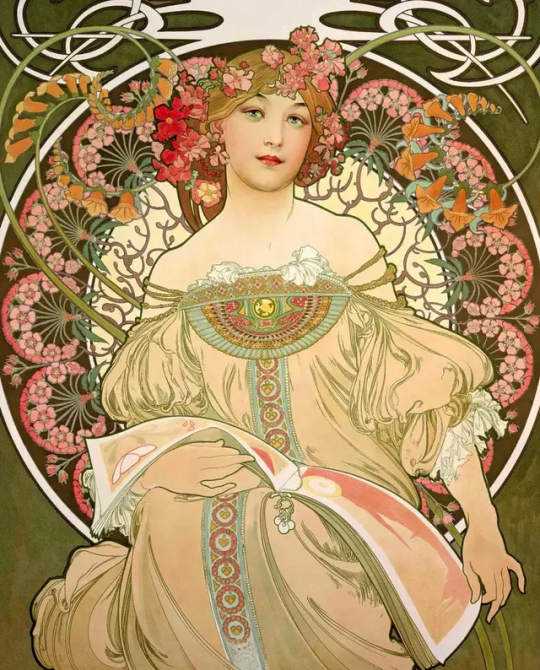
The film features more fantasy elements. I recall controversy about how voodoo was portrayed as magic rather than a religion, and to alleviate that, I think we should confirm that it's magic we're dealing with rather than a specific counterpart to a real-world concept. I'd definitely take inspiration from Alphonse Muca imagery. I do like the idea that magic is regarded as mystical and dangerous, explaining why Tiana steers away from it while Naveen is enamored by it.

2. Naveen's background and culture is more clearly defined. It was CONFIRMED when the film was released that Naveen's race is fictional since Maldonia is a fictional place, however many fans view him as being Indian. I noted in another post that they could've easily made him the prince of an Indian-inspired country (or a fictional Indian state) and educated in England, explaining the westernized fashion and interests--even though westernization was common in general around that time. Of course, if we go the "fictional location" route with the setting for the film rather than New Orleans, this isn't as much of an issue--but it'd still be a nice touch if it was an explicitly Indian-inspired fantastical kingdom, perhaps taking inspiration from Indian fantasy films.
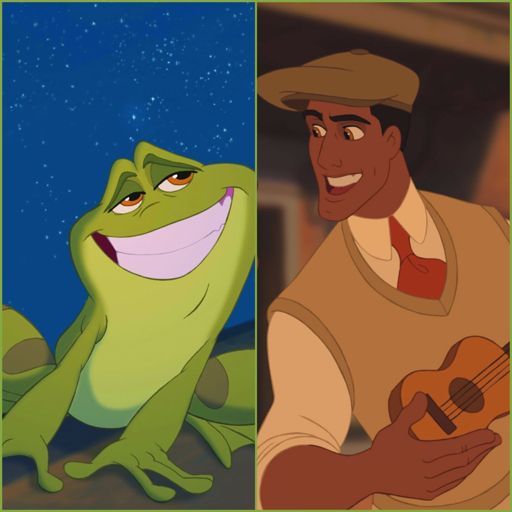
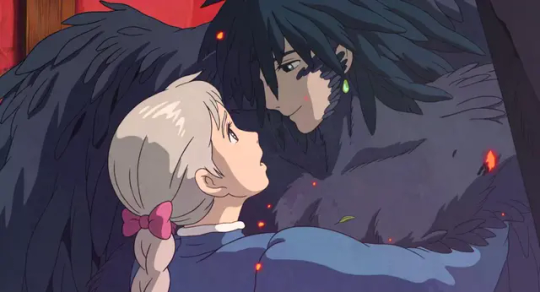
3. Play the duality plotline: Naveen is cursed to be a frog during the night, and a human during the day, albeit forgetful of this. A big criticism people had was that the two leads of color were frogs for most of the film. What if this wasn't the case? Naveen appears to Tiana both as a vain frog and a hedonistic young man. Due to Dr. Facilier's curse, Naveen is unable to remember his froggy curse by day, and thus cannot go about solving it, and the night is filled with shadow monsters who hope to stop him from breaking the spell, with Lawrence and Dr. Facilier manipulating him during the day to make him marry Charlotte. Tiana takes pity on his frog form (not knowing that he's the prince), and unlocks his kindness and selflessness, and as time goes on, human Naveen becomes kinder, and finds himself thinking about Tiana until they share a kiss at Mardi Gras, where he marries her instead of marrying Lottie, like the villains planned. When Facilier tries to get revenge on Naveen, Tiana battles him and breaks his talisman in a similar fashion to the original. (I feel like there's some inspiration you can take from "Howl's Moving Castle" with the plot.)
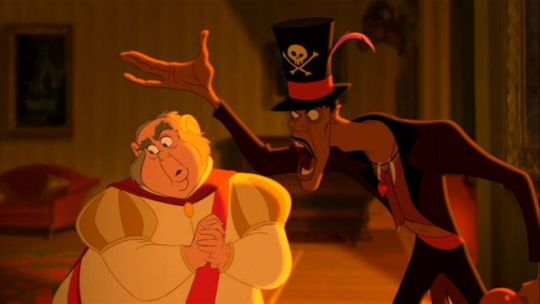

4. Give Lawrence and Dr. Facilier more backstory. It's mentioned that Lawrence has been taken advantage of all his life, and it'd be ore powerful to see his villain arc if we knew how much pain he went through rather than simply seeing him as greedy and selfish from the start. Plus Facilier's magic is QUITE interesting, and something I'd love to know more about. Perhaps tying into the racial subplot, he had a life similar to Tiana and her family, only he couldn't achieve his dream and turned to the shadows. Some may consider this a sympathetic villain story, but I do think that Facilier's backstory in the original would've included some racial themes as well.
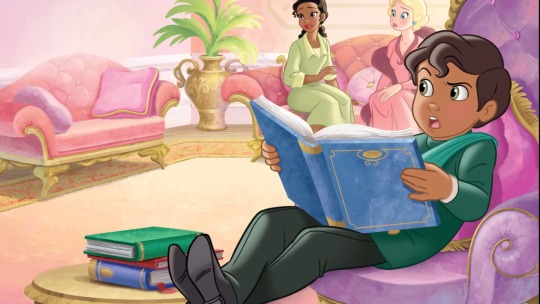
5. Make Ralphie older and give him more relevance. I do like the idea that Ralphie is close in age to Naveen (with Ralphie still being the younger brother), and they have a relationship similar to Dreamworks characters, ie Moses/Ramses, Sinbad/Proteus, and Miguel/Tulio. I do like the idea that while Naveen is selfish but somewhat innocent of the world, Ralphie is selfless but easily stressed and flustered. I picture him being a mix of Aladdin and Hercules. I love the idea that both he came to keep tabs on Naveen, and he and Naveen pursue Charlotte, though Ralphie actually develops feelings for her, and she reciprocates. Plus I do wish he had a different name, but that's just me.
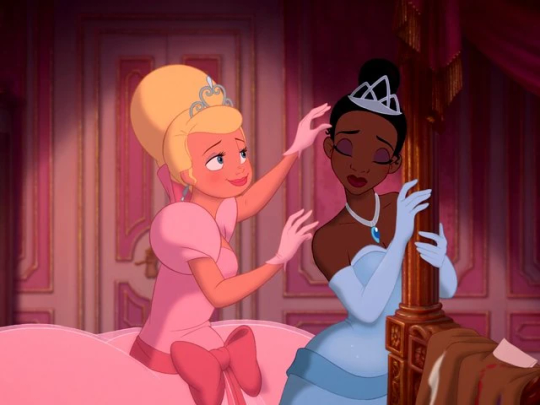
6. Charlotte's friendship with Tiana is a bit more pronounced. Some people think that her selfless act for Tiana at the end of the movie was too little, too late, as they found her annoying and spoiled. I'd enjoy more moments where we get to see their friendship, ie after Lottie gives Tiana a makeover, she asks her what happened at the party (which Tiana apparently never told her about since Lottie mentions how they're both getting their wishes granted that night).
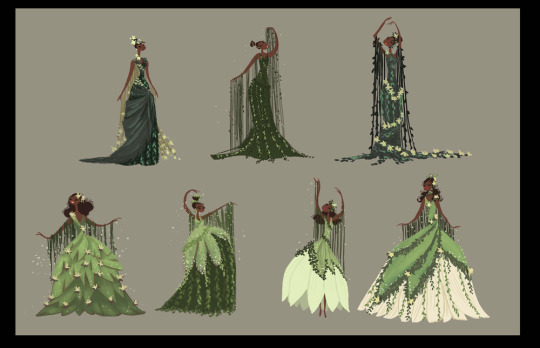
7. Embrace the green! I do want Tiana to enjoy wearing green without it being associated with her being a frog. The concept art has really great designs, and it could correlate to her growing to love Naveen--plus it'd make her a good contrast to Lottie, especially if it was Eudora making these dresses.

8. Alter the soundtrack and side characters slightly. Take "Never Knew I Needed" and make it an actual song for Tiana to sing! I'd also make Luis and make him a human (his story did feel like a racial allegory) while Ray would stay a firefly for his "Evangeline" story. Plus this could also make "When We're Human" a solo for Naveen. And maaaaybe make the "Down in New Orleans" a song for Tiana or an ensemble number. Plus a part of me wants Lottie to have a song (maybe with Ralphie).
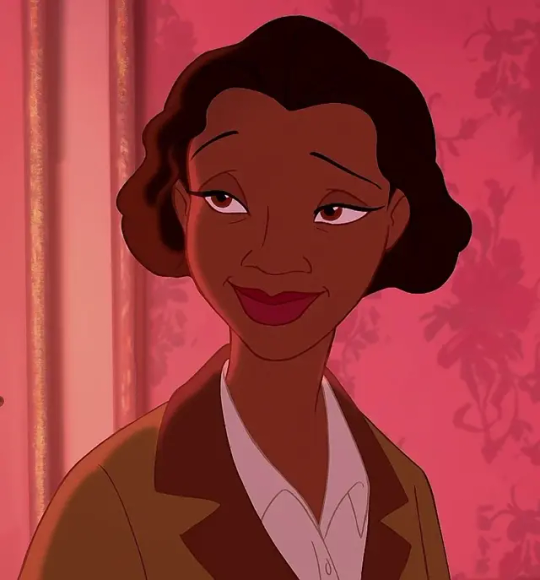
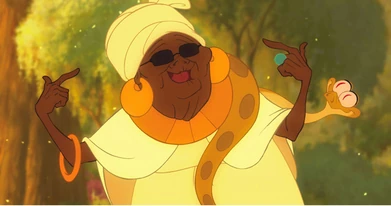
9. Remove Mama Odie and give Eudora more credit. I say this since Mama Odie didn't really do much to move the plot along (her advice of kissing a princess didn't really matter since Naveen and Tiana get married anyway), and she gave Tiana a good amount of insight that she wasn't able to appreciate until later. Allowing her mother to be a bigger part of her story is BIG for a Disney princess, especially if Tiana is staying human and staying in town.
And note: I'm also cool with the plot taking place in a fictional, magical city inspired by New Orleans, similar to how "Frozen" was inspired by Scandanavia, "Raya and the Last Dragon" was inspired by Southeast Asia, and "Wish" was inspired by Iberia. It'd also allow for anachronisms (ie allowing Tiana to have natural hair at some point when black women in 1920s New Orleans may not have been able to embrace this).
Lemme know what you think! I hope you enjoyed this reimagining.
#tiana#naveen#disney princess#the princess and the frog#disney#disney animation#disney revival era#disney prince
23 notes
·
View notes
Text
So, going to link a couple of things before I start with this.
Firstly, the new MV for the Vortex/Overthink/Tides medley which is going to form the basis of my observations.
Secondly, this post, which makes a strong argument that Link Click is deliberately drawing from other time travel media. In this case, the 2002 version of The Time Machine. Also, a fun fact not mentioned in the linked post, but that I recently discovered is that the name of the girlfriend the time traveller is constantly trying to save is *Emma*.
Now that I've linked these two, I just want to say that this rest of this post is me having fun and I would love for these to be deliberate references, but let's be real, a lot of time travel media understandably shares a lot of visual language. Hourglasses, butterflies, and clocks are all fairly recurrent themes.
Click the read more for a mix of potential references to other time travel media and screenshots of specific details of the new MV I found interesting:

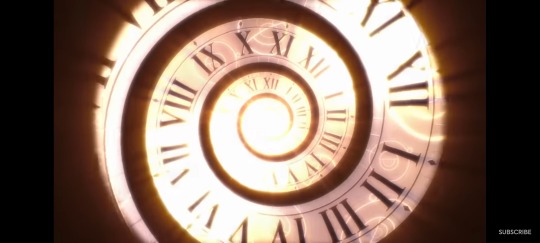
Left: Link Click (note the photo reel design). Right: Doctor Who (specifically one of the intros for the Twelfth Doctor)
And to add to the photography aesthetic present throughout, the photo reel clock resolves itself into a camera lens:

Next, we have a main character centred within a clock. In both cases, the character casts multiple shadows that resemble clock hands.


Left: Link Click. Right: Steins;Gate
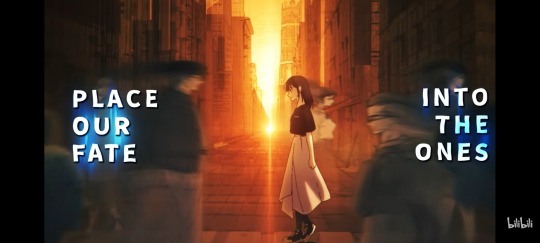
The shot where Qiao Ling is stood still amongst a moving crowd is neat for two reasons. First, the people she's surrounded by seem to be those related to the cases CXS/LG have taken on. You can see Emma just behind in the above screenshot. And the other thing is that the first time this sequence plays the moving characters are too blurry to easily make out. When the sequence reverses however, and the lyrics speak of "pausing" the scene actually freezes with all the characters clear for a tiny bit. (I didn't screenshot purely because it was a pain to get the exact moment but you can check this if you want)



Upper left: Link Click. Upper right: Higurashi Gou/Sotsu. Bottom: Steins;Gate 0.
Next up: fragments! This one is honestly a real stretch, but hey, there are at least two other time travel adjacent shows that use them as visuals in their openings. I would really like the use to be similar to in Higurashi (the example screenshot is from the anime sequel Gou/Sotsu but the sea of fragments is present in the og too). In Higurashi, each time "loop" is actually an alternate timeline (wherein events would differ slightly even without intervention) and so each fragment represents another timeline. For Steins;Gate, it's more a visual that exists purely in the opening sequence to play into the whole shattered clocks aesthetic.
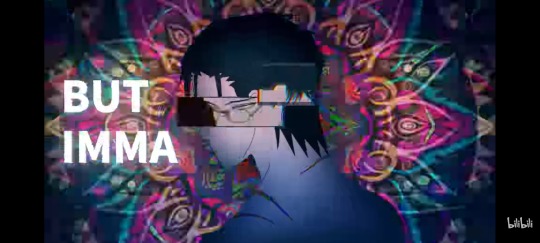

Left: Link Click. Right: Steins;Gate.
This one is inspired by me watching the opening only to go "Okabe Rintaro????" when Qian Jin showed up. But also. We can clearly see some of Qian Jin's scars in this shot. There appears to be one on the back of his neck and two over his left shoulder. These have to be relevant and obviously his eye colour has me side-eyeing but I don't think we have all the pieces for this character yet. (Him being a former cop with a connection to both of our focus cop characters though makes me think)
And a final one with generic anime trope no 58382929:


Left: Link Click. Right: Steins;Gate
I know, I know. This is typical anime/donghua. But! It's deliberately a shot in Steins;Gate that returns again and again throughout the series. It's also very associated with the character of Mayuri so take that as you will.
Bonus whatever this is:
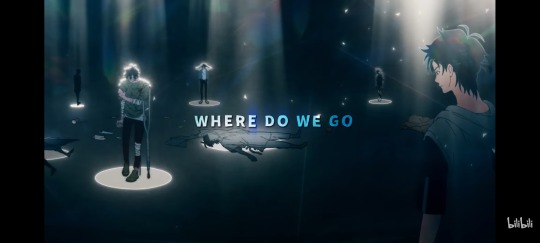
Multiple Cheng Xiaoshis in different states of doing badly. I wonder if the centremost one is the one Lu Guang appeared to be thinking of in episode 1? Possibly another "fragments" situation or if not then it may be various things Cheng Xiaoshi will go through in this season
Anyway, the Steins;Gate opening visually has a lot of similarities and of course a lot of it is natural overlap because they're both time travel series. And they both draw inspiration from The Time Machine (especially Steins;Gate's sequel, Steins;Gate 0). But I find it pretty neat how all these series from different times and places do have these recurring themes.
#link click#link click spoilers#this is mainly just spamming thoughts and references on a specific part of the mv.#I do have thoughts tm about the hourglass bit but mostly it's interesting how everything is all set up for damsel lu guang#and the recurring multiples of different characters. Plus ofc ofc people have already pointed out two hoodies which this mv agrees with#shiguang daili ren spoilers#shiguang daili ren#steins;gate#Not featured in this: madoka rebellion op. it has some clock cog shots but the op is too focused on being misleading to go full on#both madoka rebellion and s;g have the entire 'reaching out your hand for someone and they vanish' thing though which is a classic trope#but it's also a fave okay. and ptutu has chara in clock cog but isn't time travel in the same way for me to count it#edit: also tumblr mobile destroyed my left/right images smh
32 notes
·
View notes
Text
Japanese Movie Recommendations!
こんにちは皆さん!今日、特別な順序ではなく5本の好きな映画を紹介したいです。
Hi everyone! Today I’d like to introduce you to 5 of my favourite Japanese movies! My personal tastes lean more towards the horror and anime side of things, but I hope there are some here that you guys haven’t seen! Cinema can be a great avenue to delve deeper social commentaries about the country we’re interested in learning about, so I’ve tried to pick some recommendations with that in mind! :]
I’ve attempted to add all relevant content warnings, but there may be something I have missed so please take caution! I’d recommend having a look at what people say on DoesTheDogDie.com if you have specific concerns
Without further ado, let’s get started!
1. Confessions (告白) directed by Tetsuya Nakashima (中島哲也)

Confessions is a 2010 psychological thriller based off of the mystery novel of the same name. It follows the aftermath of the murder of a school teacher’s daughter by her pupils, who utilise Japan’s laws on age of criminal responsibility to “get away with it” and focuses on the differing perspectives of those involved. This film explores themes of revenge, familial values and expectations, and the normalization of violence in youth. This film is unmistakably heavy, but it is powerful.
This was introduced to me by my professor when I was doing a Japanese Film course in Uni, and it has stuck with me for YEARS. Not only is the story itself poignant, it’s brilliantly acted, beautifully shot, and has so many striking visuals with artistically composed scenes. As this was a fairly successful film, there are a fair few articles analysing its themes - if anyone is interested, I can try and dig up the resources we used when we studied this in class! :]
Content warnings: depictions and mentions of mental and physical abuse, violence towards children, violence committed by children, bullying mentions of animal death, attempted suicide, murder, mentions of chronic illness (AIDs and cancer in particular)
2. The Tale of the Princess Kaguya (かぐや姫の物語) directed by Isao Takahata (高畑 勲)
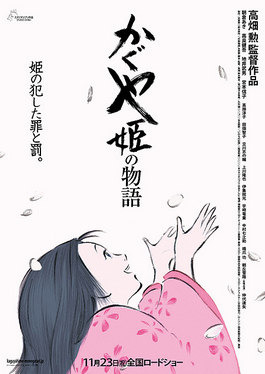
A retelling of famous folktale Taketori Monogatari (竹取物語) for modern Japanese audiences, The Tale of the Princess Kaguya brings new life to the classic story without sacrificing any of its heart. Takahata cited his own inability to connect to the original tale as inspiration for the retelling, aiming for something which the audience could connect to emotionally and really understand the titular princess.
The film deals with feminist concerns about the restrictions of womanhood (especially in the ambiguously Heian-era Japan), familial obligation, love, and the beauty of life. It’s a cultural adventure which I would recommend to anyone regardless of their familiarity with the tale it is adapting! Honestly, I’ve written essays about Taketori Monogatari and this film still managed to move me to tears with how beautifully and painstakingly rendered it is! I’d need a whole other post to detail just how much I appreciate the /art/ of this piece.
Content warnings: animal death, suggestion of sexual assault, arranged marriage, memory loss
3. Dark Water (仄暗い水の底から) directed by Hideo Nakata (中田 秀夫)

This 2002 horror movie is a sad ghost story! It follows the story of a single mother trying to get through her life while dealing with her divorce proceedings, new slightly-run-down apartment, and the paranormal occurrences haunting herself and her daughter. This movie deals with familial issues, parental sacrifice and confronting trauma.
Dark Water deals with aspects of Japanese horror which fans of Ringu (coincidentally, also directed by Nakata) may recognize, so I’d definitely recommend fans of Ringu and people wanting to explore the way that different cultures portray horror to give this one a shot. I found this one so fun to analyse recurring themes and imagery in Japanese horror, and I’m more than happy to encourage others to fall down this rabbit hole too!
Content warnings: missing children, death (including that of a child), threat of death, drowning, abandonment, divorce
4. The Girl Who Leapt Through Time (時をかける少女) directed by Makoto Shinkai (新海 誠)
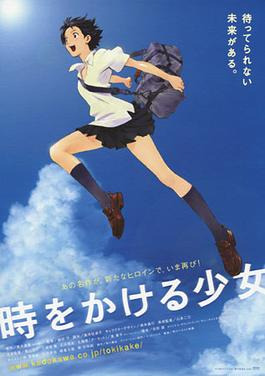
This 2006 sci-fi romance tells the story of a high-school girl who discovered that she has the ability to travel through time! Dealing with friendship, the pressures of growing up and romance, this movie integrates slice-of-life and coming of age themes into its sci-fi setting! Its your classic tale of fairly innocent time-travel shenanigans and trying to right some wrongs, and makes the the ultimate heartwarming story!
This one used to be pretty popular amongst anime fans a gooood few years back, but I haven’t seen people talk about it in a while and I wanted to mention it just in case it had fallen off the radar! With simple yet fluid character designs and beautiful scenery, this piece manages to portray grounded teenage characters and capture that warm summer feeling throughout.
Content warnings: threat of death, train accidents, minor violence and name calling
5. Tokyo Sonata (トウキョウソナタ) directed by Kiyoshi Kurosawa (黒沢 清)
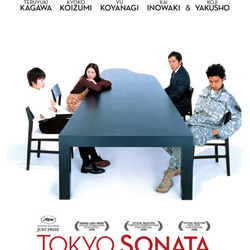
This 2008 drama follows the disintegration of a middle-class family after the patriarch loses his comfortable salaryman job unexpectedly. This film tackles issues faced by many modern families as the sense of traditionalism and societal normalcy becomes strained under the pressures of expectation, unemployment, and inability to communicate your authentic self to your family.
This film is an incredibly grounded drama, depicting real issues faced by so many families. Take a look at the date on this film, and you’ll realise how true-to-home this story of societal and economic uncertainty is for so many. Despite it all, what seems on the surface to be a depressing story of a family at their worst, actually displays a message of hope throughout. I find it to be a very realistic and poignant film.
Content warnings: unemployment, financial struggle, communication issues, war, military, abuse, domestic violence, crime, robbery, kidnapping, themes of suicide and depression, sexual assault, car accidents, police presence
Bonus! Gohatto (御法度) directed by Nagisa Ōshima (大島 渚)
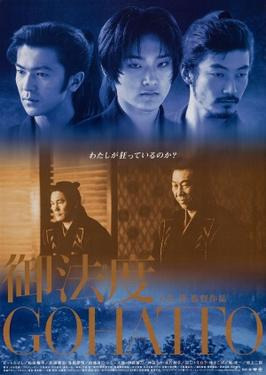
This one was recommended by my flatmate for this list, as a quick shoutout because “its very good” so I don’t personally have much to say about it - but I’m never going to complain about a recommendation for a gay samurai film. :]
それで、おすすめを終わります!
Thank you all for reading through this list! If you have any recommendations of your own, please feel free to add them on!
#leo speaks#japanese#japanese movie#japanese movies#langblr#japanese langblr#movies#film#japanese cinema#japanese study blog#japanese studyblr#film recommendations
50 notes
·
View notes
Note
Always wanting 2 expand my music knowledge but can’t grasp genre differences well. how do u find new music?? im relying on recs from other people most of the time but stuff like ur davekat music post is so specific and right I’m curious
i getch i getcha, i go thru dry spells where i listen 2 trhe same music over and over and over haha. i struggle with grasping genre diffs too, so i constantly compare artists 2 each other, and try to find music relevant to specific examples of shit i alrdy like. the only genre ive ever explored BY its genre n not specific artists is future funk. good genre.
im a music rabbithole-r by habit bc i just dont fucking understand genres. a lot of my music tastes r based on foundational shit i got into as a kid, like videogames or movies soundtracks, that i dragged out as long as i could.
as an e.g. , i was introduced to "why?" as a kid by an older relative. i got into "odd nosdam" because why? mentions him directly in a song on their first album. n i was like "whos that". i got into "clouddead" because its a collab between yoni wolf ("why?") and odd nosdam ("odd nosdam"). i got into "sole" cus he has a feat on that album. etc etc
got into "tmbg" because of homestar runner. got into "og maco" bc of the 12 bricks meme. got into "anamanaguchi" over a decade ago bc of this video.
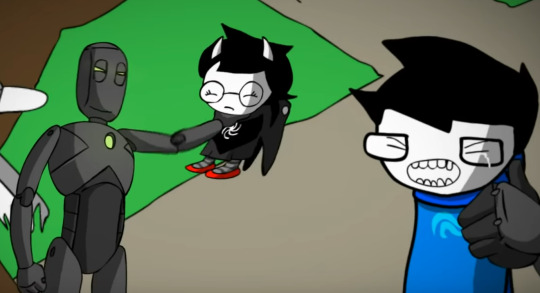
it's a rlly fun way to find music🙂
i like to find out what artists are related 2 artists i already like, or what their inspirations are, or who they inspired, and move on 2 them, and do that ad nauseam til i cant anymore. i also do this with music rec'd to me by other people which is sumth u mentioned, which is how i found ppl like pinback/rob crow and lemaitre who are some of my fav artists ov all time.
if u find a single song u like, id recommend sample the entire source album in order, and then the first album by dat artist, or just which ever one has the most interesting album art. maybe. or just click on song titles that look interesting.
if u find a cool ytpmv or mashup, check their channel, check the recs on youtube and open 10 in separate tabs and go thru them one by one bc it doesnt hurt 2 be thorough. and theres so much music out there to listen to. if a band's name, song title, cover art grabs you, listen to it. at worst u frown for a minute and move on, at best u find a lifelong fave.
id rec getting shazam on ur phone so u can grab songs u hear in public.
spotify's smart shuffle is also prety good actually. if u have spotify try making a playlist of songs u like and turning that on also.
if a character you like in something references a song or artist, check them out ASAP. very very fun 2 do can provide so much context 2 the characxter as well.
if you do this kinda shit enough on youtube, your recs start to fill up with <1k view videos from independent artists. that is when you have struck gold
thats such a fun thing 2 ask, i love music so much. thank you a lot 4 asking me such a fun thing. also if anyone is reading this reply with a song u like so i can absorb more music
12 notes
·
View notes
Note
Hey Do you have any tips on making a logo because ive been looking to make logo for Ask blog and was wondering if you had any tips?
Hey, thanks for asking! :D I can be very wordy about stuff I’m passionate about so my apologies for the length of this answer ^^’ That said though, if you have any further questions feel free to reply or send another ask :) Here’s a few tips, I hope they help!
1. Choose a font (or draw one yourself) that fits what you want the logo to represent
Similar to how specific choices are made to convey the intent in character design, font choice in a logo design can affect the overall ��feel” of it, so try to pick ones that fit whatever you’re making the logo for. In other words, logos can have their own “character” too! Many character design principles, such as shape language and colour theory, can apply to logo design as well.
If this is for a fandom/pre-existing media, try looking up those logos first if you want to match their look for your own. Also try studying logos you like in general to figure out how they're constructed, and use anything you like from them in your own design!
There are a ton of styles and combinations out there, but one of the biggest distinctions between fonts is serif versus sans serif.

Though not the case every time, serif fonts tend to look more old-fashioned/traditional, while sans serif usually appears more modern/digital.
While you can use any font for inspiration if you intend to draw your own, if you just want to type one out, then be sure to look up the usage permissions for it first. Not all are free for personal use and may be stolen even if they're listed as free online. If you’re unsure, search the font name and find the license or usage permissions directly from the creator/font foundry if you can!
2. How “fancy” you want your logo to be is up to you, but make sure it still works as a flat image as well
This is less applicable if you’re only using the logo for one thing, but generally speaking you want your logo to be versatile enough to still be readable without all of the fancy gradients and drop shadows added. Those should be extra details, not the main component that's holding up the whole design, so to speak.
I recommend starting with the flat or black & white version and refine the design enough in that stage first before moving on the final clean/fancy version. Here's a comparison between the flat and full version of the logo for my comic project, Starglass Zodiac (original post here):
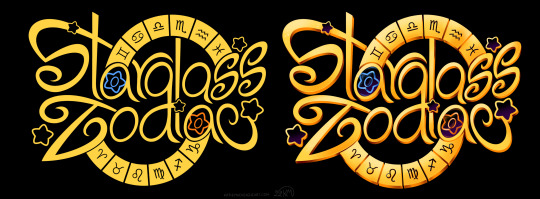
Even without all of the shiny stuff on top/underneath, the flat colour version still functions as intended.
3. Make sure the width/length/size of the logo works well for what it will be used for
For example, if you want to use the logo on the banner for your ask blog, make sure it'll can be read well in that format. You can do this by either making the logo in a file that's the same dimensions as your banner, or testing the rough design for the logo on the banner first before committing to the final design.
Also make sure that the logo doesn't blend into whatever background you intend to put it on, especially if the logo itself doesn't have a background. Adding a black or white (or both) stroke around the logo can help it appear on more background colours.
4. Make sure the most important words are largest or are the focal point otherwise
Similar to the last point, make sure that a viewer will get the gist of your logo even if they look at it quickly. This is most relevant for logos for things that have long titles or have a subtitle attached to a main name. If your logo will have multiple words, having a hierarchy of importance in size and/or colour can help the viewer see the most important part first.

--------
Now for some general additions/effects to consider for your logo!
Gradients - Your best friend, one of the easiest ways to make even the simplest logo look fancier than the flat version, if the overall style you're going for calls for it. These can allow you to have colour shifts over the whole design, or add highlights in parts of it to tie the whole thing together. You can also add edge highlights/shadows on top of these too.
Textures - Similar to gradients, textures can add a lot of flair to a design very quickly. Even gradients themselves can be textures already, like mimicking shiny metal or the like. They can also be used to represent something about what the logo is for, like adding a rocky texture for a logo involving mountain climbing or ancient ruins.
Strokes - These are outlines around your lettering that can help them be seen on multiple background colours, or to make specific letters pop out from the others. You can use multiple strokes on different areas of the same design as needed, but make sure they don't impede the legibility of the lettering itself! Many of the Kirby logos use several strokes at once, like this one below.
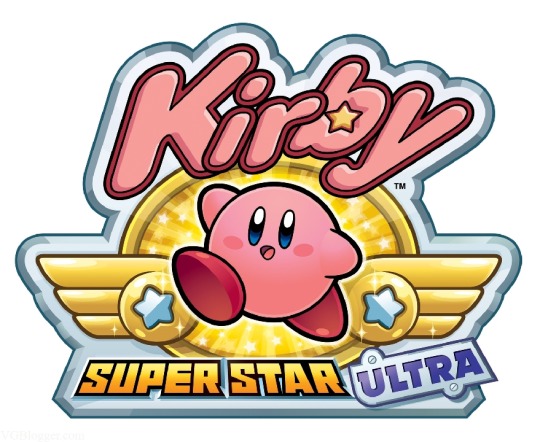
Backgrounds - Any colour/shape underneath the text to serve as a base for it. Similar to strokes, they can help the lettering read properly on multiple colours/shades. They can also provide additional information about what the logo is for or represents, like putting a sunset in the background of a logo that has "Sunset" in the name.
Drop Shadows and Outer/Inner Glows - These are often paired together, as they generally serve the same purpose; emphasizing the part of the design they're applied too. Drop shadows can help "lift" some parts of the design off the base, while glows can outline something instead, like a soft version of a stroke. It's very easy to overuse these though, so use them sparingly!
Bevels & Edging - Adding these to the lettering or other parts of the design can make them stand out more, especially if you add shading to it! One of my favourite examples of this is the main Spyro logo, both classic and modern :)

Blocking - Basically a way to make the letters or the whole logo look more 3D by adding "blocks" underneath it, which can also help add another colour to the logo's palette! Spyro's logo above uses shaded blocking.
There are a ton of other effects and ways to combine them, so feel free to experiment with a bunch of them! As one final example, here's a breakdown of the logo design I made for The Zodiac Experiment (Original post here) so you can see how these effects can work together on one piece!

Have fun designing! ^_^
8 notes
·
View notes
Note
stumbled across some of your posts about a code lyoko ttrpg
i am interested please tell me more 😭
ive been wanting to run code lyoko dnd for so long but i dont have the smarts to change dnd to make it feel code lyoko
Hey there! I'm super excited that someone's interested in this because it's such a passion project of mine haha, I'm sorry in advance if this answer is more than you bargained for!
To give you the rundown, I ran a very brief and experimental dnd 5e hack for Code Lyoko a couple of years ago for some friends. It was a lot of fun, but the system was SO badly Frankenstein'ed that we ran into a lot of technical issues, especially regarding the Lyoko/reality split and how it effected different builds. The old guide for that hack can be found here for free, but please take note that it is very informal and poorly optimized!
Recently though, I've been experimenting with non-dnd systems and building my own tabletop games, which is where Warriors of Xanadu comes into play. (This might get lengthy so feel free to skip to the TLDR.)
Warriors of Xanadu is a code-lyoko/garage-kids inspired system that I'm working on myself with the help of a few more experienced friends. It's built off of the Apocalypse World framework (basically a 2d6 system–if you've played Monster of the Week, Masks, or Avatar: Legends, think something like that) specifically designed to work well with the world and story CL provides. That means all the gameplay mechanics are inherently relevant to running code-lyoko-inspired adventures and there's no extra work to be done on your part. It's also a lot easier to teach/learn than something like DnD. (Even the character sheets are designed to be accessible so players could technically make their character with just their printed-off sheets and no additional resources! Much easier than dnd.)
Each non-GM player plays as a "Hero" and chooses a unique combination of a playbook (centered around academic character tropes like cool kid, geek, class clown, etc.) and a class sheet (how they appear on "Xanadu," with options like rogue, mage, warrior, etc.). Then, In-game, heroes go through episodic challenges where they encounter problems in reality caused by "the Virus," and must transport themselves to Xanadu to combat it. There's also a handful of original mechanics relating to social/academic rapport, corruption from the supercomputer, etc. The health/harm system and combat is inspired by Apocalypse World and Monster of the Week, and is meant to inspire a more survival/horror element than what something like dnd would provide. (Essentially the goal is not to engage in and "win" lengthy combat encounters, but to stay alive and usually avoid enemies when possible.)
I feel it's also important to note that it's not 1:1 Code Lyoko; it's very transformative and a handful of ideas are heavily abstracted to be more fun in a ttrpg setting. It's open-ended and customizable enough that you could technically run an unrelated story with it. That also means that there's some fun surprises for folks familiar with Code Lyoko, though, and you could still run something close-to-canon if you wanted.
The first draft of WoX is about 60-70% completed, I just need to finish the GM-heavy parts of the manual, finish some of the moves, and actually put together fillable playbooks/class sheets. I'm hoping to have it completed and ready to playtest by the end of the summer, but that's a loose deadline. Once I've done some playtesting and gotten feedback from others, I'll probably release the first public version on drivethru rpg and/or itch.io as a free or PWYW sorta deal.
TLDR; Warriors of Xanadu is a powered-by-the-apocalypse style trrpg system I'm working on. It's made from the ground up to support a Code Lyoko inspired campaign. I'm almost done with it but still have some work to do!
If you're comfy coming off of anon, I'd be happy to make note of you and send you the playtest version when I'm done with it, or answer any additional questions! (Same goes for anyone else reading this!)
#code lyoko#garage kids#nyklos is typing#wox ttrpg#sorry this is a lot I just love talking shop about ttrpgs and I never have a chance to tell people about WoX
20 notes
·
View notes